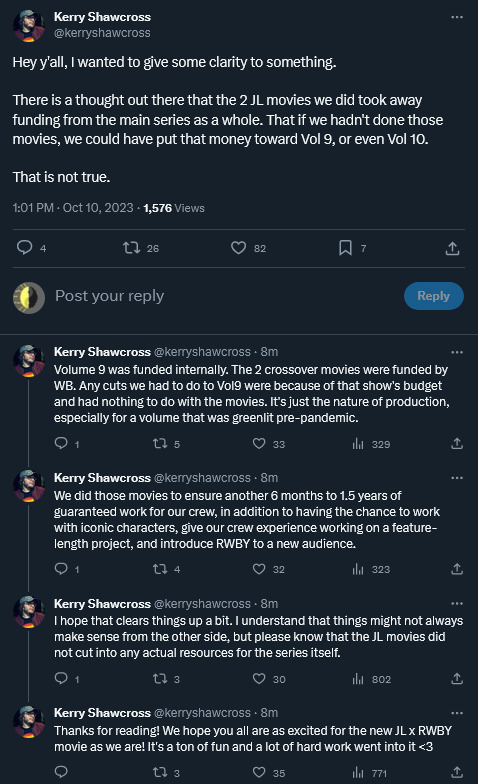No longer for avoiding spoilers on main, but it’s nice to have everything in one place
Don't wanna be here? Send us removal request.
Text
RWBY's Alyx In The Ever After
Here comes a meta on the Alice's inspiration of volume 9! The whole season is packed with allusions to Carrol's two works: Alice's Adventures in Wonderland and Alice Through The Looking Glass. I will try to focus on the references most important for our girls' journey and on how Alice's story is used to convey a central theme of the volume: growing up.
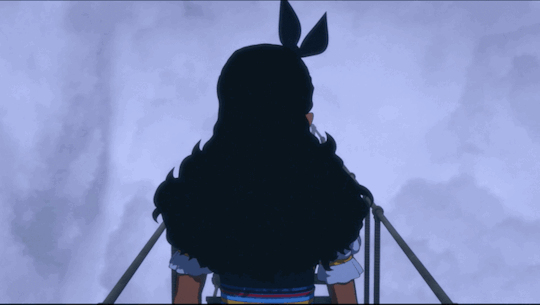
TWO WORLDS, ONE ALICE AND THE SAME STORY
Carrol wrote two books about Alice's adventures.
Alice's Adventures in Wonderland tells the story of how Alice falls down the rabbit hole and discovers a magical world. Here are some highlights and key elements (skip them if you already know the story).
Alice sees a white rabbit who keeps repeating they are late. She follows them into a deep hole and arrives in a strange room. There she finds drinks and cakes, which make her big and small. She tries to use them to grow the right size to enter a beautiful garden full of red roses. Still, she messes up, starts crying and almost drawns in her own tears. She survives together with a mouse, a dodo and other animals. The mouse starts telling her a story, but gets offended and scared when Alice mentions her kitty Dinah.
Alice meets the White Rabbit, who confuses her for their housemaid. Alice goes to the White Rabbit's house, but drinks a potion and becomes a giant. She eats some tarts, shrinks and runs into a forest. There she meets a Caterpillar, who gives her a magical mushroom to manage her size. Now in control of how big and small she is, she keeps exploring the world. She interacts with a Duchess, her pig child and her Cheshire Cat. The Cat gives Alice directions to reach the March Hare's House.
Alice arrives at the Hare's house and meets the Hare, the Hatter and the Dormouse, while they are having tea. She joins the party and discusses with them until she gets fed up and leaves. By this point, she sees a small door in a tree, opens it and finally arrives in the garden of red roses. The garden is the Queen of Hearts’ Kindgom and Alice gets invited to play croquet. Alice does her best, but is annoyed by the Queen's cheating. After some other adventures, Alice is forced to take part in a theft trial. The whole thing is a farce and eventually Alice gets angry with the Queen and the other Wonderland people. She grows big, shouts they are all just a pack of cards and destroys the Queen's Castle. She wakes up and tells her sister about the dream.
Alice Through The Looking Glass is about Alice's journey in the Looking Glass dimension, where a chess game takes place. Here is a quick summary (again, skip it if you know the story):
Alice enters a mirror and finds herself in a magical world. First of all, she discovers some living chess pieces and tries to move them around. Then, she tries to read a short poem called the Jabberwocky, but she can't understand it. Finally, she goes outside and talks with the flowers of the garden. They tell her about a flower that wears a crown and Alice soon meets the Red Queen. They have a conversation and Alice discovers the world is a giant chessboard and accepts to play the game as the white pawn. Her objective is to cross the chessboard, so she can become queen (as per the rules of chess). She goes through a square by train. Then she suddenly finds herself in a forest where she forgets who she is. Once out, she meets Tweedledum and Tweedledee, who fight each other. They point Alice towards the Red King who is sleeping and dreaming the whole world.
Later on, Alice meets the White Queen and talks with her. Then she reaches a strange shop and has a boat trip together with a goat. She finds herself in the shop once again and moves towards an egg, which turns into Humpty Dumpty. They chat about the Jabberwocky and the meaning of words, but eventually Humpty Dumpty falls. All the White King's men arrive to try and put him back together, so Alice meets the King and his two messangers (who are the Hatter and the Hare). Together with them she looks at the Lion and the Unicorn's fight.
At this point, Alice is caught by the Red Knight, but the White Knight comes and saves her. The two of them travel together and the Knight sings the Aged aged man song. He helps Alice reach the final square, where she is crowned Queen. A banquet is organized to celebrate Queen Alice, but there is a commotion. Alice loses her temper and reproaches the Red Queen by shaking her. The Queen turns into a small black cat and Alice wakes up in her house with her two kitties. She is left wondering if she is the one who dreamt it all or if the Red King did.
The two worlds get often mixed up in adaptations and Alice's adventures are reduced to a single journey. This happens because the two books tell the same story. They metaphorically show Alice's growth.
In Wonderland, Alice's different sizes represent confusion over who she is, which is normal for children growing up. This insecurity is why Alice initially can't grow the right size to enter the garden. Still, she succeeds by the end and eventually grows big (grows up) in the climax.
In Through the Looking Glass, Alice starts as a pawn, goes through a journey and finally gets crowned queen. This motif conveys her inner growth.
In other words, Alice's story is a coming of age journey. She starts as a child and symbolically develops into a more mature version of herself.
The Girl Who Fell Through the World is the same. Alyx is a selfish kid, who becomes a different person by the end:
A door opened for Alyx at the Tree. Before she goes back home, the girl had a great many questions to ponder. After all the lessons she learned, and the friends she'd made and lost. Who had she become? Would she still be the same Alyx when she went back home? The leaves of the tree rustled, and on the wind, Alyx heard one more question… What… are you?
"What are you?" is the central question of Lewis's fairy tale. Let's try to better understand it by exploring the setting (the Ever After), the protagonist (Alyx) and their connections with Carrol's works.
THE EVER AFTER (THE WORLD)

The Ever After alludes to Wonderland / the Glass World. Here are some examples:
It's made up by acres, like the Glass World is made of squares
People shrink like in Wonderland
Time and space work funnily, like in the Glass World
It has talking animals, like Carrol's stories
It has several characters from Alice's books, like the Jabberwalker (Jabberwocky), the Curious Cat (Cheshire Cat), the Herbalist (Caterpillar), the Red Prince (Red Queen) and the looking glass insects
Its inhabitants use words in peculiar ways, just like the characters in Alice's worlds
It's a dimension full of nursery rhymes and sayings that become real things. For example, the Ever After takes the meaning of metereopatic and inverts it. Here, people's moods are not affected by the weather, but the weather gets influenced by emotions
The name "Ever After" itself comes from two sayings:
Happily Ever After is the ending of most fairy tales. It describes perfect happiness that lasts forever, which is an idea rooted in childhood
Hereafter references the life after death. It ties this dimension with death and grief and makes it a realm of the deads
So, the Ever After combines together the themes of childhood and death. The end result is a world built on the concept of ascension:
Curious Cat: When we break or wear out or simply finish what we were made to do, we’re called back. But Herb… his heart was too weak to listen, so I gave him a little bit of mine. Now that Herb’s properly returned, he’ll be fixed up nice, and made into the Herb he wanted to be when he was still “Herb”. Then he’ll come back and find his purpose. Could be the same as before, or maybe not. I know, I know, where you're from, things… die… but we’re just not like you at all. We… ascend. Herb will have a purpose again.
Afterans don't die, but ascend. They get to live "ever after". Just like in an imaginary world thought up by children. And in a sense, that's exactly what the Ever After is:
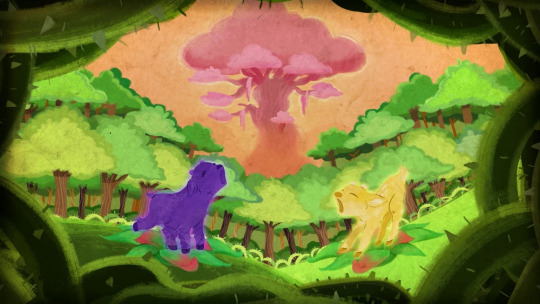
It is a proto-dimension, where the brothers play and experiment, as children do. The moment they introduce the Jabberwalker (death) things change, the balance is broken and the Brothers must grow up and find a new equilibrium. This is something that happens to everyone. Growing up means to deal with death and to accept it. It is the only way to embrace life fully. The Ever After is a place that helps the characters do exactly this, which makes it the Underworld of RWBY in three different ways:
It is the world under Remnant. The world that comes before. This is why the characters fall into it. It is a place linked to the past of the universe (the Brothers) and to the past of the characters (a childhood book).
It is the world of the deads, where the characters deal with loss by going through the five stages of grief. In this sense, their fall is a metaphorical death.
It is the world which exists under many piled up emotions. It is where people get in touch with their interiority by falling within themselves:
Inside A new me, I'm ready But who will I find?
So, childhood, death and interiority. These are the three ingredients of this setting. Let's see how they get mixed up in the story of the girl who fell through the world.
ALYX (THE PROTAGONIST)
Alyx alludes to two Carrol's characters, as her design implies:
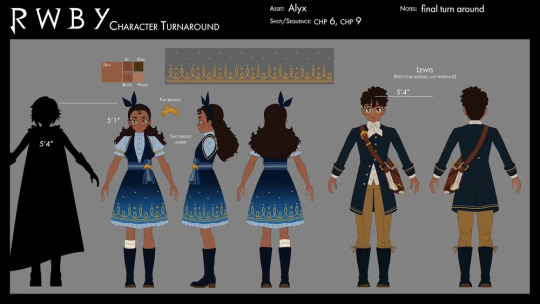
She is modeled after Alice herself. She wears a blue dress and a bow like her Disney counterpart
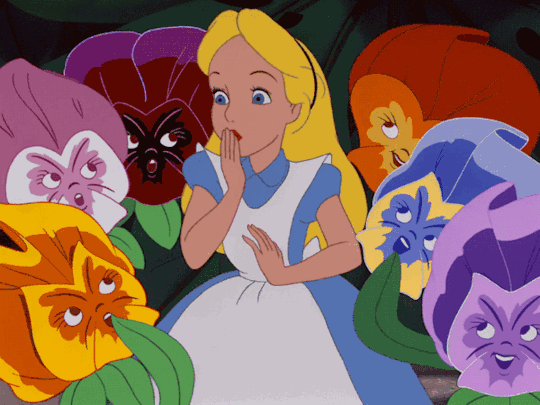
She has several details linking her to the White Rabbit. For example, her bow resembles small rabbit ears and she has a gold rabbit-shaped brooch
This isn't surprising because Alice and the White Rabbit are written as foils in the original book. According to Carrol:
"And the White Rabbit, what of him? Was he framed on the "Alice" lines, or meant as a contrast? As a contrast, distinctly. For her 'youth', 'audacity', 'vigour', and 'swift directness of purpose' read 'elderly', 'timid', 'feeble' and 'nervously shilly-shallying', and you will get something of what I meant him to be."
RWBY takes this idea and combines Alice and the Rabbit in one character. The result is an ambiguous young girl:
Oscar: I thought the idea of falling through Remnant into a new world was exciting. I never understood why she was so sad when she finally made it back home. But now it makes more sense. She wasn't the same girl anymore.
Ozpin: I was recently reminded of an old fairy tale. A young girl flees the consequences of a choice, to a magical place. But, having never learned from her initial failure, she only succeeds in spreading it.
Yang: But she was kind of a mean person, right? She lied and cheated her way through most of the book. Weiss: She was trying to survive. The morals of those old stories are so simplistic.
Alyx is described as a lost child, a corward, a mean person and a survivalist. Everybody interprets her differently. This is true also for the two people who know her personally.
Jaune turns Alyx into a villain, who sacrifices her brother and lies to everybody:
Jaune: I think… Alyx traded him to the tree, in order to leave. And then she wrote him out of the story.
Lewis tones down Alyx's negative traits and makes her the heroine of his book:
Blacksmith: Yes. Only Lewis returned home. The Girl Who Fell Through the World is the story as he wished it happened.
A monster and a hero. Everybody makes Alyx black or white, while she is gray, like her small knife:
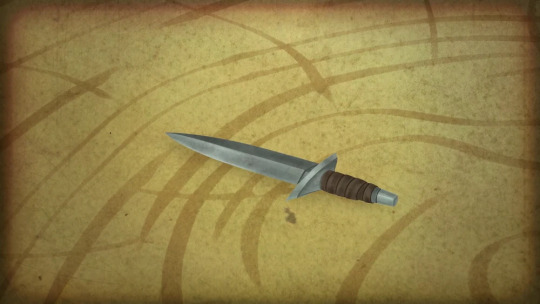
Weiss: What did Jinxy want from Alyx (for her knife)? Blake: Her saddest memory… and her happiest.
She is gray because she is a real person. Still, she gets reduced to a character. This duplicity is at the root of her two allusions:
-Alyx plays the White Rabbit (a character) in RWBY's story in volume 9. The girls try to re-live her journey, so that they can escape. As they make progress, though, they discover Alyx doesn't meet their expectations. They take detours and find their own path.
Similarly, Alice quickly loses interest in the White Rabbit, after she meets him. She switches goals mid-journey, from the White Rabbit's house to the garden of roses.
-Alyx is Alice (a person) in her own story, which gets turned into a fairy-tale by Lewis. The Girl Who Fell Through the World even comes from a line in Carrol's Alice's Adventures in Wonderland:
Presently she began again. `I wonder if I shall fall right through the earth! How funny it'll seem to come out among the people that walk with their heads downward!
So, Alyx is both an extra (a character) and a protagonist (a person). At the same time, she is the mix of Alice and the White Rabbit in another sense. On the one hand Alice is a young girl who grows up. On the other hand the White Rabbit is "always late". So, Alyx is a child, who matures, but does so too late:
NeoCat: Decided she wanted to fix everything that she had broken in the Ever After! Including poor Jaune! So Lewis went, and in the very last moment… Alyx didn’t…
She mistreats the Afterans throughout her journey and has a heel-realization only in the end. By then, though, the Curious Cat is already broken by her lie and kills her. Still, Alyx does grow up and makes a final choice, who defines what she is:
Blacksmith: When Alyx’s life ended, she chose to leave a part of herself behind. A wish to fix what she had broken.
She truly turns into the heroine Lewis portrays her as. Sure, Alyx never gets the chance to become an adult and to live a long life, but she still grows into herself.
In conclusion, Alyx's story ties together the themes of childhood and death, as it is both a fairy tale and a tragedy. Still, hers is only the first adventure set in RWBY's Wonderland. The second is the one of our protagonists'. How do they fare in this strange dimension?
THE SAME WORLD, NEW PROTAGONISTS AND A SEQUEL
Weiss: Great! So we’re not in the stupid story after all. We’re in its stupid sequel!
RWBY find themselves in Alyx's world and start a journey similar to hers. However, they soon realize they can't leave the Ever After by following into Alyx's footsteps. In other words, RWBY start by thinking they already possess the interpretative key to solve the Ever After:
Blake: In the story, Alyx fell from the sky and met with the Hunter Mice, got trapped in vines, fought a Jabberwalker, and got her knife stolen by… A talking raccoon. Yang: Yeah. And then she beat the Red King at a board game, met the Curious Cat, the Rusted Knight, and finally got out through… Blake: The tree
They follow the Girl Who Fell Through the World, but things go bad and it is only when they start living their own story that they are able to go back to Remnant.
This resembles Alice's adventures, which take place in games. The first book uses cards, while the second is inspired by chess. However, both stories end with Alice refusing the rules. She escapes both dreams by stopping to play. She destroys the card castle in Wonderland and ends the pompous party in Through The Looking Glass. Both books have Alice think with her own head, instead of following someone else's laws.
Alice's two endings tie with the books being an exploration and critique of Victorian society. The strange worlds the girl visits are society seen through the eyes of a child. The end result is a place full of madmen because adults' rules and laws make no sense to kids. Alice is asked to conform to a morality, which is pompous and superficial, but she chooses not to and grows in her own person.
RWBY focuses on the opposite idea. The protagonists aren't children lost in the confusing world of adults, but grown-ups, who find themselves in the universe of their childhood. As a result, they are asked to face their inner children, say goodbye to them, but without betraying their ideals and dreams. They must grow-up to be the heroes they dreamt of as kids. Still, in order to do so they must leave behind a childish vision of the world.
Finally, RWBY's adventure is framed as a sequel to Alyx's, just like Through The Looking Glass is a sequel to Wonderland.
The two Alice's stories are written as mirrors of each other:
Wonderland happens in Summer, while Through the Looking Glass is set in Winter
Wonderland makes use of Alice changing sizes to move the plot. Through the Looking Glass instead has the world act strangely around Alice, with time and space twisting
Wonderland is a game of cards, while Through the Looking Glass is a match of chess
Similarly, RWBY's journey mirrors Alyx's:
Alyx's story is one of broken things that ends in death
RWBY's story is one of healing that ends with a rebirth
In particular, Alyx, just like Alice, becomes friends with a cat, but hurts them and has them change for the worst:
Blacksmith: One act of dishonesty… caused an unfortunate change…
Ruby instead, differently from Alice, grows fond of a mouse and inspires them to become a hero:
Blacksmith: One small kindness in one small moment would be such a marvelous transformation.
A LITTLE SILVER LINING
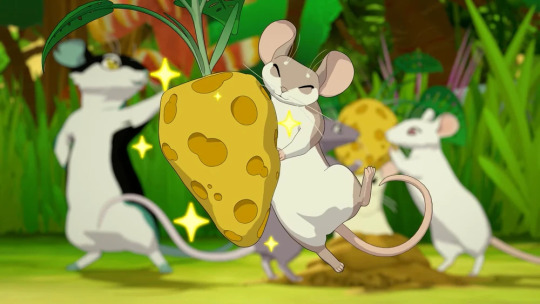
Little alludes to:
Alice Liddle, the real life counterpart of Carrol's Alice
The Little of Little Red Riding Hood, which is fitting as Ruby carries the mouse in her hood
Stuart Little, a mouse, who is born in/gets adopted by a human family
The dormouse and the mouse of Alice's Adventures in Wonderland
Little alludes to Alice because Ruby herself plays Alice in volume 9. The small mouse simply highlights this role with their presence. As a matter of fact you can read Ruby and Little's foiling as an inversion of Alice and the White Rabbit's:
Alice is a brave and strong-willed child, while the White Rabbit is old and acts cowardly. Moreover, Alice starts her journey by following the rabbit.
Ruby is a teenager hero, who appears big and mature to small and child-like Little. As a result, the mouse leaves everything behind and follows Ruby around.
In other words, Little is Ruby's child-self and is characterized as our protagonist at the beginning of the series. This is why they are the Little of Ruby's Little Red Riding Hood. They embody the small child who sets up to explore the world and help others.
In particular, Little stays true to his Stuart Little movie-counterpart:
A Little always finds a silver lining
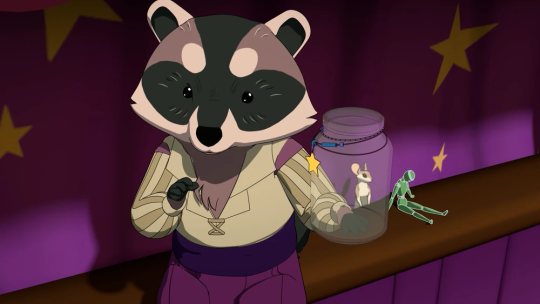
Jinxy: Bidding starts at… Enough hope to fill this jar!
Little becomes Ruby's silver lining, as they are the one giving our girl hope throughout her journey in the Ever After. In a sense, they symbolyze Ruby's wide-eyed idealism, which is what activates her silver eyes.
What about Little's Wonderland allusions?
Just like the Dormouse, they often fall asleep, whereas their first meeting with Ruby resembles Alice's interaction with the mouse:
Alice almost drawns in her own tears and survives together with the mouse, a dodo (Carrol's self-insert) and other animals. Alice chats with the mouse, but she upsets them after mentioning her cat Dinah.
Ruby starts crying and makes it rain. Then, she meets Little, helps them and cheers up. However, she gets startled when the mouse starts talking and she unwillingly scares them by mentioning Blake's cat ears. A dodo is also present at the scene.
Ruby and Little's meeting is also loosely similar to Alice's conversation with the live-flowers. There Alice is surprised the flowers can talk, asks them if they have seen other people and has trouble reaching her destination because she moves toward it, instead than in the opposite direction (as per looking-glass logic). Finally, the flowers mention the Red Queen.
Ruby is shocked Little talks, asks them about her friends and can't reach the tree because she lacks acceptance. Finally, the Hunter Mice foreshadow that cats should not be trusted:
Mouse Leader: You have our sincerest apologies! Please understand that our kind is a bit skeptical of cats… and snakes… and cats.
In general, Little and the Hunter Mice are reflections of Ruby and RWBY. Little is a child who dreams of becoming a Hunter, like Ruby. The Mice prey on big and scary monsters, like RWBY fight Grimms. So, these characters set up our heroines' journey through the Ever After. A challenge to redefine who they are and what being Huntresses means. Let's now focus on this adventure and on the strange creatures RWBY meet in their personal version of Wonderland.
THE RED PRINCE HAS A GREAT FALL
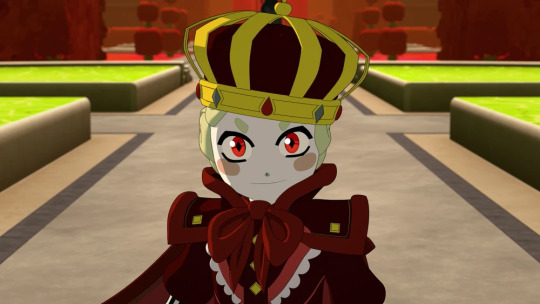
The Red Prince alludes to:
The Queen of Hearts, as he is pompous, a cheater and executes his soldiers
The Red Queen, as he meets RWBY at the beginning and challenges them to a game of chess
Humpty Dumpty, as he cracks like an egg, after realizing RWBY are humans
'They gave it me,' Humpty Dumpty continued thoughtfully as he crossed one knee over the other and clasped his hands round it, 'they gave it me — for an un-birthday present.' 'What is an un-birthday present?' 'A present given when it isn't your birthday, of course.'
Humpty Dumpty comes up with the idea of un-birthday and RWBY goes to the Red Prince's birthday party, which celebrates the King's rebirth as a Prince:
Curious Cat: Oh, it was all very sad. The Red King couldn’t cope when he lost to Alyx, a crying mess. Thankfully, he was called back and fixed up, and now he’s the Prince you met.
The Prince represents a psychological regression, an un-growth, which adds an ironic spin to his "royal birthday". Not only that, but Alyx is the one responsible for this transformation:
Blake: So, that’s why he cheats, when the Red King didn’t. But that still doesn’t explain why the Red Prince was so much meaner. Curious Cat: While the Prince may not remember Alyx’s deception after ascending, the heart very rarely forgets.
In Wonderland, the Queen of Hearts cheats in her game of croquet, while in the Ever After Alyx plays dirty to win. In other words:
The Red Prince behaves like the Queen of Hearts because he is imitating Alyx, the player who defeated him
The Red Prince (from king to prince) is the opposite of growth (from pawn to queen)
The Prince is a character who suffers a loss and isn't able to overcome it:
'Humpty Dumpty sat on a wall: Humpty Dumpty had a great fall. All the King's horses and all the King's men Couldn't put Humpty Dumpty in his place again.'
None of his horses nor men are able to put the Red King in his place again, which is why he ascends and becomes a Prince. He chooses to run away from his failure and escapes into childhood.
RWBY find themselves in a similar situation:
Weiss: We hatched a crazy plan that put a whole kingdom at risk, and we don't even know if we saved the Relics from… Maybe… Jaune and Winter were able to get them out, despite… everything… despite us…
They suffered a great fall. Will they be able to put themselves back together again? This is the question the Prince embodies, which is why Ruby's match against him mirrors RWBY's journey up until volume 8:
Ruby leads an army of hopeless soldiers, but inspires them to fight
Everything seems to be going well and they conquer more and more space on the chessboard
Still, something unexpected happens and RWBY is targeted by both friends and foes
The girls manage to put up a wonderful fight... only to fall down the table
Isn't it similar to RWBY's experiences in Atlas, where they are let down by Ironwood, have their plan ruined and finally fall because of Cinder?
The Red Prince's game is a metaphor of RWBY's past, which is an inversion of Alice's initial game of chess:
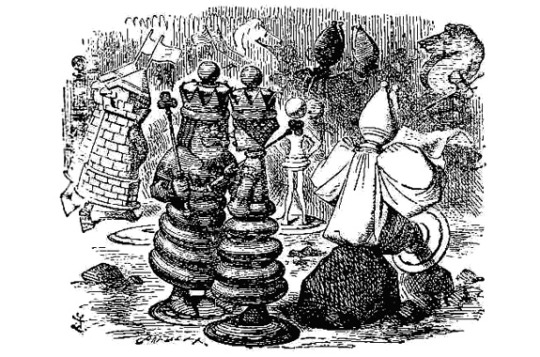
In Through the Looking Glass, Alice sees the chessboard and the pieces she will later on cross and meet throughout her journey. She has an anticipation of the game she is about to play.
In the Ever After, Ruby re-lives her biggest defeat. She plays again a match she has already lost:
Ruby: I don't know how that went so...wrong.
She feels she let Atlas's people and her friends down, so Weiss, Blake and Yang almost die in a fall. Speaking of WBY, their shrinking means two things:
They are turned into pieces Ruby moves around because our leader feels she has to carry her team on her shoulders.
They become small because Weiss, Blake and Yang have all faced their smallest and weakest parts, so they could grow. Ruby instead doesn't change because she has been stagnating.
ADVICE FROM AN HERBALIST - GROWING UP
After the game with the Red Prince, RWBY's priority is to bring WBY to their original size. In their quest, the girls meet the Herbalist:
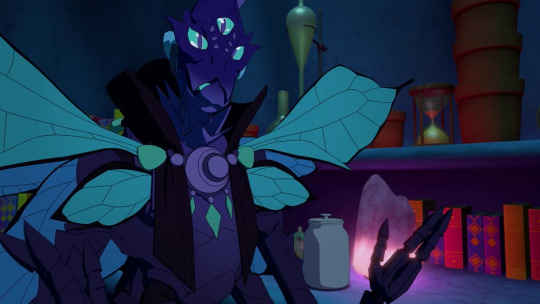
Who alludes to the Caterpillar:
"Who are you?” said the Caterpillar. “I—I hardly know, sir, just at present—at least I know who I was when I got up this morning, but I think I must have been changed several times since then.” “What do you mean by that?” said the Caterpillar sternly. “Explain yourself!” “I can’t explain myself, I’m afraid, sir,” said Alice, “because I’m not myself, you see.” “I don’t see,” said the Caterpillar. “I’m afraid I can’t put it more clearly,” Alice replied very politely, “for I can’t understand it myself to begin with; and being so many different sizes in a day is very confusing.” “It isn’t,” said the Caterpillar. “Well, perhaps you haven’t found it so yet,” said Alice; “but when you have to turn into a chrysalis—you will some day, you know—and then after that into a butterfly, I should think you’ll feel it a little queer, won’t you?” “Not a bit,” said the Caterpillar. “Well, perhaps your feelings may be different,” said Alice; “all I know is, it would feel very queer to me.” “You!” said the Caterpillar contemptuously. “Who are you?”
Alice meets the Caterpillar, while he is smoking a hookah atop a mushroom. The creature has a key conversation with the girl, as he teaches her how to control her transformations. As a matter of fact he advices Alice to eat the two different sides of the mushroom to turn big and small. In the Disney adaptation, he blows smoke in Alice's face multiple times and ends the scene by becoming a butterfly.
The Herbalist lives in a mushroom and uses the tree leaves to create smoke that forces people to confront "what they are" and "what they wanna become". At the end of his meeting with RWBY, he ascends and is later on reborn as a Butterfly.
Herb's role in the Ever After is to help others become their ideal selves, just like the Caterpillar helps Alice reach her ideal size. At their root, both characters deal with identity and change:
Herbalist: You are making this far more complicated than it needs to be. We all have our titles, our roles to play, but in order to help you become whatever it is you need to become, you should really have a better understanding of what you are now.
It is just that the Caterpillar does so physically, while Herb psychologically. To be more precise, RWBY divides what is united in Carrol's work. Alice's transformations symbolize her inner changes, so to control her size means she understands who she is better. In RWBY, instead:
The girls want to go back to their original size and to reach the tree physically. The Cat frames themselves as the one, who can lead them towards both goals. In fact, they help the girls make the Growgurt Parfait.
The girls need to mature psychologically and to reach acceptance. This is their path to Remnant and to the future. The Herbalist knows it and tries to help RWBY. However, RWBY's ignorance of the Ever After leads to a misunderstanding.
In any case, Herb manages to make the girls self-reflect. In particular, his mist forces them to face their past selves. WBY deal with who they were and show they are ready to bloom into their final selves. Ruby instead is frozen and can't accept who she is:
Past Ruby: So, are you a Huntress? Like the ones you read about in books? Ruby: I… I don’t know…
In order to find herself, she has to go through a deeper exploration and to accept her darkest emotions. This is why she gets invited to a certain tea party.
A MAD TEA PARTY - DEATH AND GRIEF
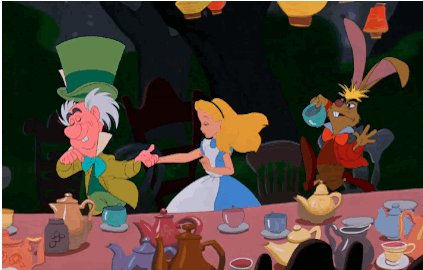
"In that direction,' the Cat said, waving its right paw round,lives a Hatter: and in that direction,' waving the other paw, `lives a March Hare. Visit either you like: they're both mad."
Alice's Mad Tea Party involves three characters:
The Hatter
The March Hare
The Dormouse (the Mouse in the Disney movie)
The trio is stuck at forever five o' clock because the Hatter killed time, while singing. As punishment, Time traps him and his friends in an everending tea party. In the book, the Hatter and the Hare are both mad and try to put the sleepy Dormouse in a tea-pot. In the Disney adaptation, the trio is celebrating an unbirthday party, which ends with the Mouse reciting a poem and entering a tea-pot.
RWBY has three characters allude to the mad tea trio:
Illusion Roman alludes to the Hatter
Juniper alludes to the Hare
Little alludes to the Dormouse/Mouse
Moreover, each one of them resembles a dead character and accompanies the person who misses this character the most:
Roman is the product of Overactive Imagination and embodies Neo's feelings over her friend. He stays by Neo's side and speaks for her.
Juniper shares Pyrrha's golden color scheme and is called after Jaune's team when Pyrrha was alive. She is Jaune's partner in the Ever After.
Little has a personality similar to Penny's and is excited to be Ruby's friend. They attach themselves to Ruby and tag along in her journey.
So, Neo, Jaune and Ruby travel together with a magical creature who embodies a lost loved one. This fits the Ever After being RWBY's realm of the deads, a place for the characters to face grief. Not only that, but these three traveling companions link Neo, Jaune and Ruby themselves to the mad tea party. In other words, the characters' losses are driving them insane. Neo, Jaune and Ruby are mad out of pain. This is why their unhealthy copying mechanisms are highlighted in scenes involving tea.
Neo's mad tea party
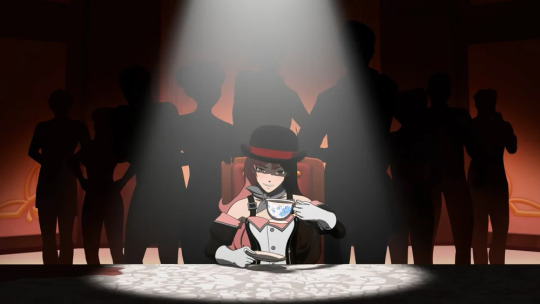
Neo, as the Hatter lashes out at Ruby and organizes a tea-party to celebrate Red's un-birth:
Neo-Roman: You don’t deserve to die, Red. You deserve to be broken down… Torn apart… wiped from existence.
Jaune's not crazy breakfast
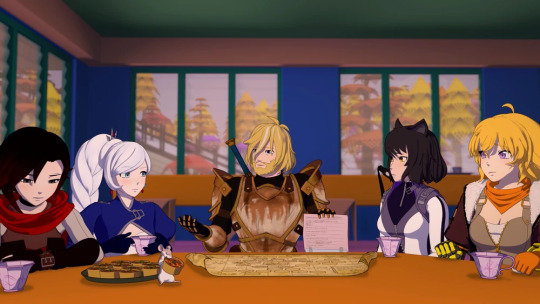
Jaune, as the Hare invites RWBY to his house, where he shows his own instability and hero complex:
Jaune: This isn’t crazy… I’m not crazy… This… isn’t crazy, it’s easy!
Ruby trapped in a tea-pot

Ruby, as the Dormouse, gives up a part of herself and seals it in a tea-pot. Or in this case, the Teapot Lady:
Ruby: Here! I’ll give you this! I-It carries a mother’s promise!
What is more, the last time Alice looks at the tea trio, she sees the Hatter and the Hare trying to put the Dormouse in a tea-pot:

Similarly, Ruby's interactions with Neo and Jaune push her to drink the tea-tree and to ascend. In a sense, Neo and Jaune shove Ruby into the tea, as if she were a sugar-cube:
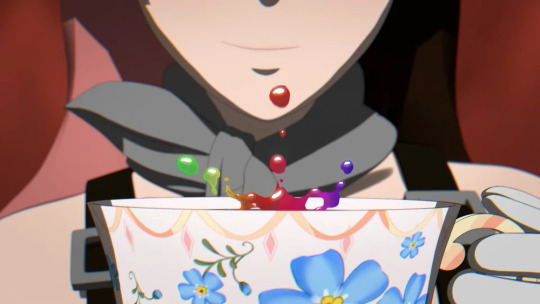
In general, all three characters need to face their loved ones' loss. Only in this way, they can accept themselves and move on. In order for them to grow, they must struggle with death. That is their major conflict in the Ever After and what makes them the three main characters of the volume. Fittingly, they are all major foils of Alyx herself:
Neo plays the part of the villain, but deep down she is a girl, who can't express herself. Like Alyx, she acts selfishly and lets her negative emotions control her. However, by the end she chooses to truly face herself and change.
Jaune plays the part of the hero, but deep down he is a child lost in a magical world, just like Alyx. This is why he needs to reconcile with her to move on.
Ruby plays the part of Alyx, the broken little girl, who loses herself in the Ever After. Still, she is deep down a Huntress and just needs to find herself once again. Her actions heal, whereas Alyx's hurt.
The Alyx who runs away from her responsibilities in a magical world, the Alyx who is saved by a hero and the Alyx who grows up and learns a lesson. Neo, Jaune and Ruby play all these different versions of the Girl Who Fell Through the World. Moreover, they all have additional Carrol's allusions, which define their arcs in the Ever After.
NEO - THE JABBERWOCKY
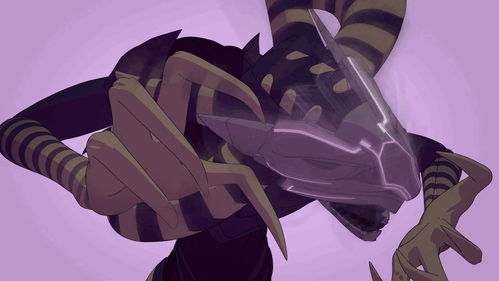
Neo alludes to the Jabberwocky, which is a nonsense poem Alice finds in Through The Looking Glass. This poem:
Tells the story of a child slaying a monster
It is impossible to fully understand
Both things apply to Neo:
She kills the Jabberwalker, but assimilates them in her illusions. In other words, she is both the child who slays the monster and the monster itself.
She doesn't speak and has trouble communicating with others. Even when her illusions talk for her, she isn't understood:
Say something real Do you only speak in riddles, chatterbox? I'm waiting for your ugly mouth to Say something real Do you only speak in riddles, chatterbox? I'm waiting on your ugly mouth to spit it out
In other words...
The Jabberwalker represents death and dies unheard:
Jabberwalker: Stop… It… Cease! No! NO! NOOOOOO!
Neo is a villain whose grief stays unrecognized:
Ruby: If you’re looking for an apology, you’ve wasted your time! Not only by others, but by Neo too. She kills a part of herself in the Jabberwalker.
Not only by others, but by Neo too. She kills it in the form of the Jabberwalker. And yet, her grief keeps festering and comes to the surface through her semblance (the illusory Jabberwalkers). Neo's refusal of it leads to this feeling consuming her, until she gives up control on her body and life:
Curious Cat: You’ve lost something most important, haven’t you? And now you have nothing left. How delightful! An empty host, perfect for me to fill.
It is only by earnestly facing her own pain and vulnerability that Neo saves herself:
NeoCat: No! These cracks, these feelings! I can’t… I can’t!!!
And is ready to finally change:

So Neo plays a monster (the Jabberwocky/the Jabberwalker), but is deep down a lost child (Alice/Alyx). She is the most negative interpretation of Alyx, as she is selfish, runs from her responsibilities and hurts others. And yet, she is a person and can change if she is given the chance. She is the Alyx our protagonists need to empathize with:
Ruby: She’ll find herself, one way or another.
JAUNE - THE WHITE (KNIGHT) RABBIT
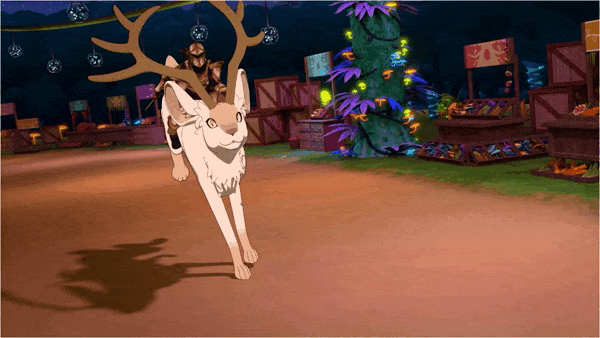
Jaune alludes to:
The White Knight in Alyx's story, as he is a knight, who travels with her and tries to help her
The White Rabbit in RWBY's story, as he tries to guide RWBY, but isn't reliable
The White Knight rescues Alice from the Red Knight and accompanies her to the last square, where the child gets crowned queen. He is described as an odd inventor, but he is one of the kindest people Alice meets. Before separating, he sings Alice a song whose name is The Aged Aged Man. Alice is said to remember this scene vividly in the future.
Jaune becomes an aged aged man in the Ever After and is described by Lewis as an ally to Alyx . As the Rusted Knight, he tries to help the girl and her brother and is remembered fondly by both siblings, despite Alyx's betrayal.
The White Rabbit is a nervous wreck, who is always late and has his home messed up by Alice, who grows big and gets struck in it. Similarly, Jaune is unstable when he reunites with RWBY and even quotes the White Rabbit's famous line:
Jaune: I’m late! I’m late!
Not only that, but RWBY's arrival in the Ever After cracks his heroic persona and he starts showing how hurt he really is:
Jaune: I’m sorry, I… I know I’m not okay. I- I’m not right, but… How am I supposed to be…? I’ve been alone… for SO… LONG! Here… On that bridge… I was the only one that could do it! I was the ONLY ONE!
Until he has his house indirectly destroyed because of Ruby (or so he lashes out):
Jaune: They’re gone… because of you! The Walkers came for you, because Neo. Hates. YOU!
In general, Jaune is late to ascend:
Blacksmith: I’ve been waiting a long time for you. Jaune: Well, I made it.
Which makes him similar to Alyx. This isn't by chance because Jaune and Alyx are tied. For example, the moment Jaune breathes the tree's smoke, he sees Alyx, instead of his past self. Why is that so? Two reasons:
Jaune frames himself as a hero (the White Knight), but is actually just like Alyx (the White Rabbit). He is a person lost in an unknown world, who takes time to mature.
Alyx is Jaune's inner child, the same way Little is Ruby's. Jaune enters the Ever After and meets a child, who accompanies him in his journey. However, he fails to protect this child and she dies (like Ruby sees Little killed by Neo). Still, just like Little comes back as Somewhat, Alyx too returns in an unexpected form:
Jaune: That’s Alyx’s knife. Wait, how did you have this?
And heals Jaune:
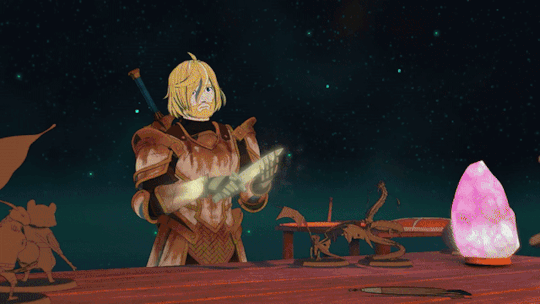
So, Jaune and Alyx share the White Rabbit allusion because symbolically Alyx represents a part of Jaune. She is his least idealized and most vulnerable side. She is the child, who is stubborn and cowardly. She is the damsel in distress Jaune tries to negate and control, which is why she rebels against him:
Jaune: She said she wouldn’t let anyone get in the way of her leaving. That she’d do whatever it takes. And then she was gone.
And yet, she is also the part of Jaune who grows and leads him toward a better self:
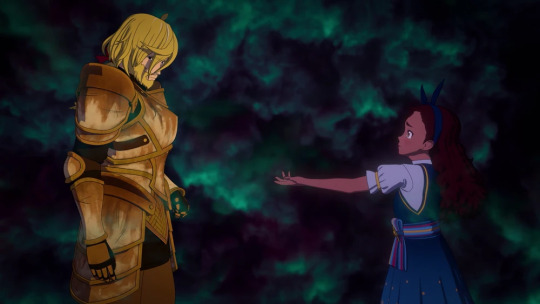
It is only through accepting Alyx in both her flaws and tragedy:
Jaune: Can you… answer a question for me? I need to know if it’s true what the Cat said that Lewis went back and… Alyx… Blacksmith: Yes. Only Lewis returned home.
That Jaune is able to move on. Just like it is only by letting go of the Paper Pleasers, that he gets to meet the Genial Gems. As a matter of fact the Paper Pleasers' transformation takes inspiration from another fairy-tale: The Three Little Pigs.
Three little pigs build houses to protect themselves from the Big Bad Wolves. The first pig builds a house of straws, which gets destroyed. The second makes a house of sticks, that fares better, but is ultimately blown away. The third one uses bricks and is able to defend himself from the wolf:
Yang: No flood or fire will ever hurt them again.
The Paper Pleasers are made of paper, which makes them vulnerable to fire and water. The big bad wolves come:
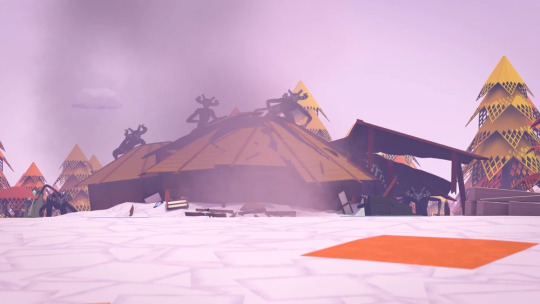
And the Paper Pleasers are destroyed, as a result. In the end, though, they are reborn as rocks, which means they are now stronger and more resilient.
Jaune goes through a similar process. He keeps himself together through the frail paper mask of a noble hero. By the end of the volume, though, he is ready to be reborn as a gem, with a stronger self-identity.
So, Jaune plays a hero (the Rused Knight / the White Knight), but is really a child who refuses to grow (Alyx / the White Rabbit). He is the Alyx that is slow to realize her shortcomings, but eventually fixes them. He is the Alyx who starts as a child, but grows into the heroine of her own story.
Alyx: Maybe it’s time for a change, to be the kind of man you always wanted to be.
RUBY - THE RED QUEEN
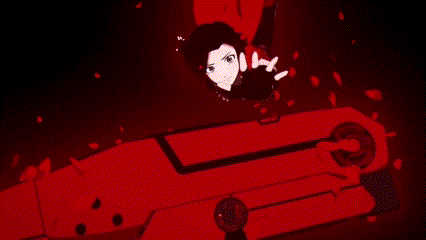
Ruby alludes to:
Alice, who explores two magical worlds in order to grow up
The Red Queen, who moves faster than other chess pieces
In Wonderland, Alice reaches the garden of red roses through a door in a tree. In Through The Looking Glass, Alice crosses the chessboard and is crowned queen. Similarly, Ruby travels through the acres and finally reaches the tree, which leads her home through a portal. What is interesting is that Alice's two destinations loosely use red rose symbolism:
A large rose-tree stood near the entrance of the garden: the roses growing on it were white, but there were three gardeners at it, busily painting them red. (Alice's Adventures in Wonderland, Chapter VIII)
There’s one other flower in the garden that can move about like you,’ said the Rose ‘but she’s more bushy than you are.’ ‘Is she like me?’ Alice asked eagerly, for the thought crossed her mind, ‘There’s another little girl in the garden, somewhere!’ ‘Well, she has the same awkward shape as you,’ the Rose said, ‘but she’s redder—and her petals are shorter, I think.’ ‘Does she ever come out here?’ ‘I daresay you’ll see her soon,’ said the Rose. ‘She’s one of the thorny kind.’ ‘Where does she wear the thorns?’ Alice asked with some curiosity. ‘Why all round her head, of course,’ the Rose replied. ‘She’s coming!’ Alice looked round eagerly, and found that it was the Red Queen. (Through The Looking Glass, Chapter II)
The Queen of Hearts' garden is full of red roses, while the Red Queen is described as a red flower with thorns. In short, Alice's final goal is either to find red roses (Wonderland) or to become one (Through the Looking Glass). Well, Ruby has to find who she is (a red rose) and to be reborn as a queen (queen Alice).
The Red Queen is characterized by her speed. In particular, in her scene with Alice, she states that:
‘A slow sort of country!’ said the Queen. ‘Now, here, you see, it takes all the running you can do, to keep in the same place. If you want to get somewhere else, you must run at least twice as fast as that!’
Ruby is the same. Her semblance makes her fast, which ties to her being quick-witted and precocious. At the same time, Ruby's speed is a metaphor for her coping mechanism. She keeps pushing forward, so she doesn't have to face her emotions. This makes so she keeps on running, but can't advance or grow. This is why Ruby's development happens in a moment of quiet:
A moment of quiet is all it takes To reclaim a life and a promise made
She stops and has a moment with herself, where she faces her own repressed interiority. She confronts her losses and her ideals in the form of Summer Rose. Ruby's mother is her inspiration and who our little rose wants to resemble. Alice wants to become a Queen. Ruby wants to become a Huntress. And yet, Ruby is at the point, where she doubts she can fulfill her dream. She doesn't know if she can truly grow up. So, she is asked to make a choice.
She can either become a copy of Summer (the Red Queen):
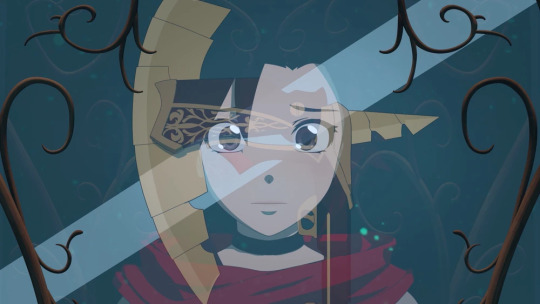
Or she can stay in the Ever After forever, as Alyx (Alice):
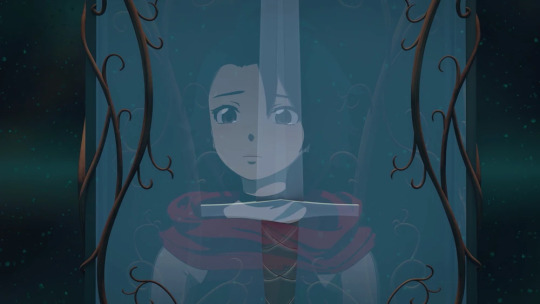
Will she grow up by leaving her ideals behind or will she lose herself in childhood? Will she regress like the Red Prince? And what can she become if even Summer isn't perfect?
Ruby: Are you just trying to tell me that it’s useless? That I shouldn’t even try? Is that the big lesson I’m supposed to learn? Just… give up?
Ruby chooses to simply become herself:
Ruby: This one (Crescent Rose). What happens… if I choose me?
She is asked if she wants to become Alice in Wonderland or if she prefers to become the Hunter of Little Red Riding Hood. Her answer is to be Little Red Riding Hood, who is growing into her own Huntress:
I'll be who you were and I'll be even more
She isn't giving up on her dream of saving people. Still, she is the protagonist of her fairy-tale:
I am the reflection of who prevails I'm what inspired the fairytale
Alice's doubt at the end of Through The Looking Glass is if she is the dreamer, or if the Red King is. Ruby is instead unsure of who she is dreaming of:
I know it's you and I, when I look inside
Ruby dreams of Summer, both out of grief and as a hero. In volume 9, she starts dreaming of herself. She becomes her own dream:
Somewhat: You do feel… familiar. Like a happy dream I can’t remember.
She becomes her own hero:
(I can guide me, I can guide my way out)
So, Ruby plays the lost child (Alyx), but is strong enough to be a hero (a Huntress). To be precise, she is both. She is Little Red Riding Hood and the Hunter. She is the Alice, who chooses not to give up on her childhood purity, but to grow into an adult in her own way. Without cynism and with hope.
Somewhat: It will be alright, Huntress.
CURIOSITY KILLS THE CAT
Neo, Jaune and Ruby all face death, look inside and grow. Someone else is instead unable to do so:

The Curious Cat alludes to the Cheshire Cat, who is depicted as:
Alice's ally in Carrol's Adventures in Wonderland. The Cat gives Alice directions and chats with her during the Queen's croquet game.
A jerkass in the Disney Adaptation. The Cat frames Alice for a prank to the Queen and gets the girl in big trouble.
RWBY takes both characterizations and shows how the Curious Cat goes from a helper to an enemy because of Alyx's betrayal:
Jaune: Alyx broke her promise to the Cat.
At the same time, the Cheshire Cat owes their name to the saying to grin like a Cheshire Cat. The Curious Cat is instead designed after the proverb curiosity kills the cat. Interestingly, the original form of the saying is care kills the cat, which mirrors the Curious Cat's original purpose:
Blacksmith: And so, using the skills and tools they have been given, they began to design their own creations… in utmost secrecy. The God of Darkness breathes purple fire at the fire. The God of Light picks up a wooden figurine of the Curious Cat and breathes black smoke, thus bringing the Cat to life. Blacksmith: Soon they realized their new creation could do their job for them. Finding the broken parts of the Ever After.
The Brothers make the Cat to care for the Afterans. Their role is to show empathy and help everyone reach the tree, so they can be fixed. In short, an existential pet therapy. However, the Brothers leave their creation and later on the Curious Cat meets Alyx. As a result, their care slowly turns into curiosity for the Brothers' new creations. Still, Alyx's lie quickly changes this neutral curiosity into jealousy:
Curious Cat: I’m not like the other Afterans here, I’m cursed with curiosity. I need to know everything! But more than anything, I need to know why my makers left me here…
The Cat has their heart broken, but there is no-one to care for them:
Blacksmith: A terrible thing to have a broken heart… And there’s nobody to send them back to the Tree for repair.
This makes the Curious Cat a foil to two characters:
Like Salem, they are outside the cycle of life and death. Or in this case the cycle of ascension. They need to go to the tree, so they can heal and be reborn. However, they can't, as they are designed as a mechanism of the cycle itself, rather than a participant.
Both Gods: So long as this world turns, you (Salem) shall walk its face.
NeoCat: Taking a page out of the caterpillar's book, hm? The leaves have no effect on me.
Like Ruby, they give up pieces of their hearts to others. Still, they grow tired and feel there is no-one, who would do the same for them.
Ruby: Why are you asking me? Because I’m the leader? Because I’m just supposed to have something to say? Cuz I don’t… I mean, why do I have to be the leader anyway? Why do I have to always be the one to pick people up? What about me? “No time”, right? “Gotta get home!” “Gotta help Jaune!” Gotta find someone who isn’t just going to screw everything up! “Gotta stay positive!” Right?!
Curious Cat: Mmmm, when we break or wear out or simply finish what we were made to do, we’re called back. But Herb… his heart was too weak to listen, so I gave him a little bit of mine.
Like our heroine, the Curious Cat is left hopeless and empty by a bad experience. Still, they refuse to face their pain. They never reach acceptance of themselves and others, so they spiral. In particular, they are a negative mirror of all the other Ever After characters:
Like the Prince, the Curious Cat is tricked by Alyx, which is why they hold a grudge against humans. Still, the Prince has some hope to change, while the Curious Cat can't.
Like Herb, the Curious Cat has grown tired of their role of guide. Still, Herb manages to ascend and be reborn as a butterfly. The Curious Cat instead dreams of escaping the magical world.
Like Jaune, the Curious Cat is hurt by Alyx's betrayal. Moreover, both Jaune and the Cat refuse to face themselves and ascend. Still, Jaune wishes to help others. The Curious Cat instead starts hurting them.
Like Neo, the Curious Cat targets Ruby and uses her as a scapegoat. Neo blames all her pain on Ruby and thinks that by killing her, she can feel better. The Curious Cat instead thinks Ruby is the perfect host for them to escape the Ever After. By the end, though, Neo gives up on her revenge. The Cat instead fails to understand humanity:
Curious Cat: You’re broken! You break everything you touch! I call Humans… weak! Confused! Incomplete!
The Curious Cat is then the villain of the volume because they share the other characters' conflict, but fail to solve it positively. Ruby looks inside (the tree), while the Curious Cat looks outside (Remnant). Ruby chooses to become herself. The Curious Cat wants to possess another. Ruby starts developing empathy towards others:
Ruby: But what will happen to Neo?
The Curious Cat instead uses their empathy to manipulate others:
Curious Cat: I gave him (the Hawker) something new to do for the moment. Now go! Your friends need to get big again, or we’re all Jabberwalker dinner!
Their obsession towards humans and Remnant leads to his defeat and demise by the Jabberwalkers' hands. So, curiosity kills the cat, indeed. Is that really the Curious Cat's end, though? The proverb curiosity killed the cat has sometimes the added part but satisfaction brought it back. The Curious Cat is dismembered by the Jabberwalkers' clones. Not by the original Jabberwalker. Does it mean the Curious Cat can't ascend anymore, or is there some hope for them?
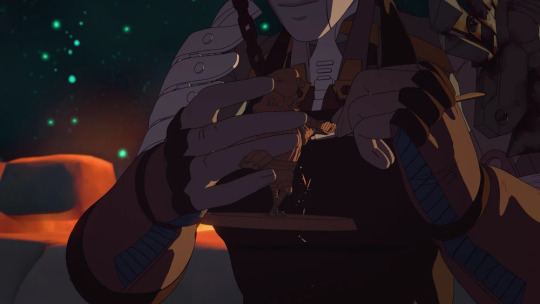
The Blacksmith whittles a wooden figurine of the Hawker, previously killed by a Jabberwalker's clone, and places it with the other figurines of the Afterans.
The series leaves it ambiguous. Speaking of ambiguity...
WHAT IS THE BLACKSMITH?
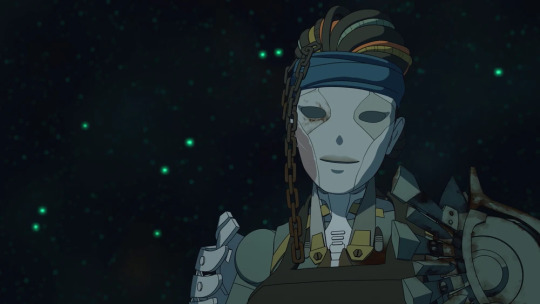
What is the Blacksmith? She is known as:
The Blacksmith
The Tree
Ruby: I wasn’t expecting to be here. Are you the Tree? Blacksmith: You could say that. But that is a simplistic understanding of the Tree, and what it does.
The Lively Carpenter (possibly)
Weiss: Of all the characters from the book, why did it have to be the Cat? Why couldn’t we have gotten help from the Lively Carpenter or the Rusted Knight? One was sweet, one was handsome, and neither of them had the attention span of a goldfish!
She is hard to define and is a god-like entity. Symbolically, she serves as the Great Mother, as she is an avatar of the Tree, that gave birth to the Brothers. She guides Ruby and the other characters towards self-actualization and adulthood. At the same time, she explains the balance between life and death, creation and destruction:
Blacksmith: She will have the chance to return her broken heart… And becomes something new. Such is balance.
So, she is tied to both transformation (growth) and death (grief). These ideas are well expressed by her design. On the one hand she appears bigger than humans and is a blacksmith, who molds others. On the other hand she loosely resembles several dead characters:
In her first appearence and in the opening she appears made of golden metal, which makes her look similar to Pyrrha
Se is robotic, like Penny
Her hair resembles a detail of Alyx's outfit
This doesn't mean she is any of these characters, but simply that in a volume focused on dealing with loss, her appearance has missed people come to mind. So, she herself embodies this idea:
Blacksmith: Nothing. No one is ever truly lost.
The deads still exist in the heart of their loved ones and in the stories that are remembered and told.
ALYX'S EVIDENCE
Blacksmith: The Girl Who Fell Through the World is the story as he wished it happened.
The Girl Who Fell Through the World is a children classic written to deal with grief. It is a tragedy turned into a fairy tale, which is what RWBY must do with Remnant itself. It is what they have already done with their sequel to Alyx's story:
Blake: Do you guys think… we might have… made things even worse in the Ever After? Just like Alyx did? Ruby: I’m… not sure. I'd like to think we did at least a little good. Right?
Alyx herself offers some important teachings. Some evidence worth to consider:
Alice grows up by waking up from the fairy tale. Alyx instead grows up the moment she chooses to stay in the fairy tale and fix it.
Alyx is similar to two Maidens our characters have met in their journey.
1- RWBY frames growing up not as forgetting who you were as a child, but as becoming a person your child-self can be proud of. This is why Little becomes Somewhat:

They look similar to Ruby. At the same time they are still far from being complete:
Ruby: Do any of those sound close? Somewhat: Hmmm. Somewhat. Yeah. Somewhat. I’m not any one thing, I’m somewhat of a lot of things!
Otherside, Did you mean to make me half or whole? Will I ever be (complete)? When will I become all of me?
However, they are on the right path. Just like our protagonists.
2- Alyx is a girl all the characters misunderstand and objectify. In the end, though, she manages to affirm herself by leaving behind a part of herself. Doesn't she remind you of anyone?
Penny: I won’t be gone, I’ll be part of you.
Penny is a child, who gets controlled and manipulated and dies too soon. She still self-actualizes and affirms who she is with a final choice and legacy.
Alyx is a girl who is selfish and cruel, but finally opens her eyes and chooses to change. She dies, but manages to fix what she has broken and saves Jaune. Her story probably mirrors the outcome of Cinder's arc. Our Cinderella will have a heel realization and affirm who she is in a final act of selflessness.
In other words, Alyx's story is meant to be a bridge between Penny's tragic death (past) and Cinder's final sacrifice (future). It is used to help the characters overcome Penny and Atlas, so that they are ready to help Cinder and Vacuo:
Ruby: Where will this take us? Blacksmith: Not where, when you are needed most.
102 notes
·
View notes
Note
What do you think of the songs from RWBY volume 9?
Hi!
Sorry for the long wait and thank you for the patience <3
So, I love volume 9 soundtrack! It is wonderful musically-wise and I am very happy to see that Casey, just like Jeff, uses the songs to explore the characters' arcs. Volume 9 is really the return of character-driven songs and I am grateful for that!
Here is the list of some metas I have already written for some tracks:
Chatterbox (Neo + CC's song)
Worthy (BB's song)
Quiet (Jaune's song)
As for my favourites:
Guide My Way
Chatterbox/Quiet/Checkmate
Worthy
Trapdoor/Inside
The Edge
Guide My Way is one of my favourite RWBY songs ever, so let's analyze it a little!
GUIDE MY WAY
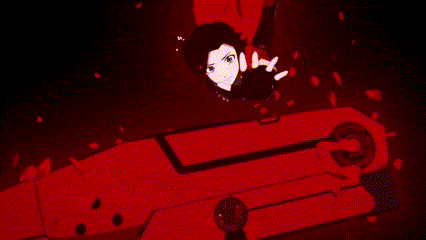
The Red Like Roses trilogy explores Ruby's feelings over Summer, as she sings to her mother. In particular, the red like roses motif shows the layers and the evolution of Ruby's grief.
Initially, we are simply told that:
Red like roses fills my dreams and brings me to the place you rest.
Red roses remind Ruby of Summer Rose, so she goes to visit her grave:
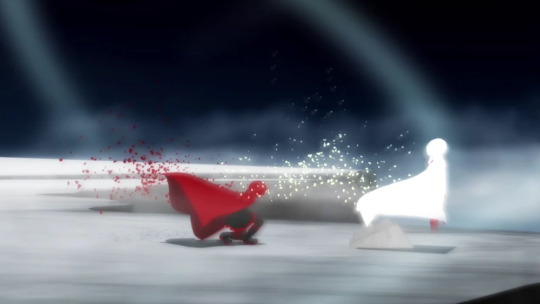
This is the premise of the Red Trailer, but no other indication is given. This fits Red Like Roses being about RWBY as a team, which mirrors Ruby's tendency to carry others' burdens and to repress her own.
However, Red Like Roses Part II reveals Ruby's reaction to Summer's disappearance is raw and complicated:
Both voices: It doesn't matter how The petals scatter now Every nightmare just discloses It's your blood that's red like roses Voice 1: And no matter what I do Nothing ever takes the place of you
It is Summer's blood, that's red like roses. So, Summer becomes linked to violence and death. However, Ruby refuses to face these dark emotions. It is this hidden trauma, which leads to Ruby's spiral and breakdown in volume 9. Here is where Guide My Way starts:
Saw you In a dream Are you who you seem? Was it always in the cards for me To be aimless? No direction, nothing pulling me down From the sky it seems like I always get too High Oh the air is cold, I don't know how to breathe I'm begging, can you Guide my way out Of this place?
Ruby is aimless and there is nothing pulling her down. This choice of words is interesting because they tie into the gravity imagery, which fills the Atlas Arc:
Keep dreaming 'bout a better world You keep wishing for some clarity Always hoping that a lightning bolt Is gonna save you from this gravity
Gravity is linked to limitations. It is something that chains and makes people fall. People like Ironwood, for example, who is crushed by this force together with his kingdom. And yet, Ruby is designed as a person able to defy gravity. As a matter of fact Petal Burst lets her basically move unbounded by the laws of physics:
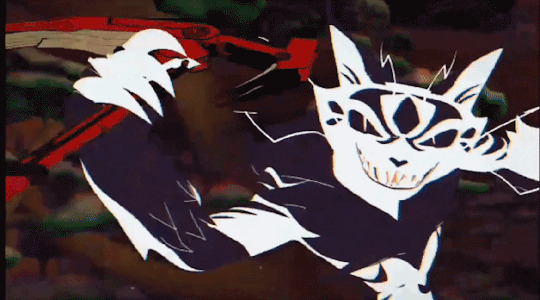
And yet, this freedom slowly becomes a burden. Ruby is never tied down by bad things. She can inspire everyone. She can guide everyone. She always flies higher than everyone. And yet, this in itself is a problem:
Past Ruby: That’s right! It’s up to you to make things better, isn’t it? Everything all depends on you! Your sister needs you, your friends need you, the whole world needs you to keep fighting, forever and ever, against an invincible monster that took your mother!
Ruby is so above everyone else that she finds herself lonely and lost:
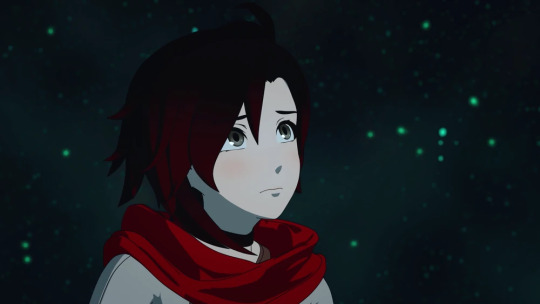
She drinks the tea and ends up in a strange dimension, where she has to choose alone who she is going to be. In this dream world, she meets the person who fills her dreams:
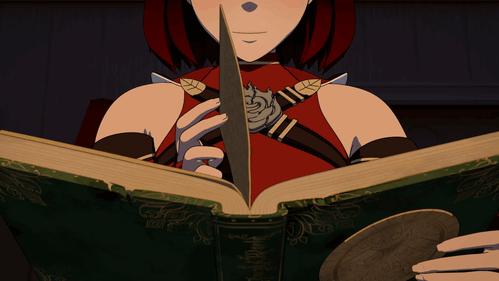
Red like roses fills my dreams
Guide My Way is just a long monologue Ruby tells Summer. Basically a prayer:
Open wide You were born to hypnotize them all They said their prayers (Can you, can you) can you hear me up there?
Through this one-sided confrontation Ruby affirms herself as a person still strongly defined by her mother:
I can't define Would it even be enough to change my mind? Your memory ever-lasting at war with my foolish pride What is left? I know it's you and I, when I look inside
And yet, a different individual, as well:
I'll be who you were and I'll be even more
She is still incomplete:
Otherside, Did you mean to make me half or whole? Will I ever be (complete)? When will I become all of me?
And yet, she realizes Summer may not be complete herself:
What survives After all the dust has gone? Were you there till the end (the end)? Were you at least called a friend?
Ruby doubts her mother for the first time. Was she at least able to be herself until the end? Like Penny, who was at least called a friend? Or did Summer become her own antithesis?
Who is Summer Rose?

A broken pedestal.
And who is Ruby Rose?
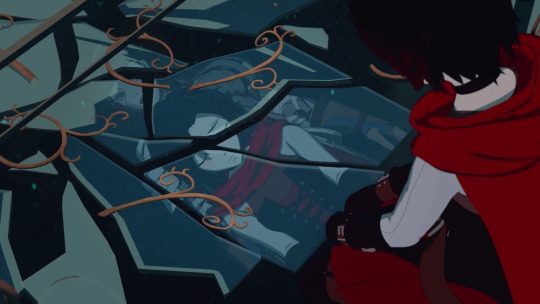
A shattered mirror.
Or is she?
A moment of quiet is all it takes To reclaim a life and a promise made
Just like Jaune, Ruby only needs a moment of quiet to realize who she is supposed to become:

I am the reflection of who prevails I'm what inspired the fairytale
Her own reflection prevails on Summer's one. In the beginning, Ruby wants to be like Summer, that she equals to the fairy tale heroes her mom reads her about:
Ruby: I love books. Yang used to read to me every night before bed. Stories of heroes and monsters… They're one of the reasons I want to be a Huntress!
Still, Ruby is the one who will make the fairty tale into reality:
Blake: The real world isn't the same as a fairy tale. Ruby: Well, that's why we're here! To make it better.
As a result, she doesn't need fairy tale heroes anymore. Rather, she is going to inspire fairy-tales. Actually, she has already inspired one:
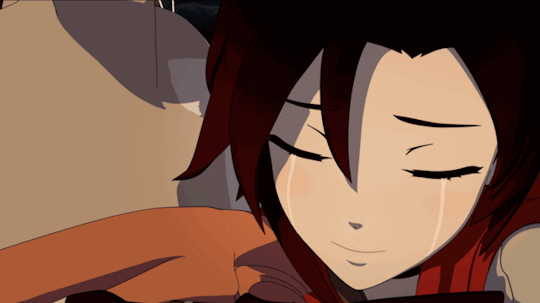
She inspires Little to grow into Somewhat. She helps a literally fairy-tale character. She is the childhood hero (Huntress) to Little. Just like Summer is Ruby's childhood hero:
Somewhat: You do feel… familiar. Like a happy dream I can’t remember.
Ruby is a happy dream Somewhat can't remember. Summer is a happy dream Ruby can't remember. This is why in Red Like Roses Part III there is simply:
Red like roses fills my dream
Red like roses here is not linked to death (it doesn't bring Ruby to the place Summer rests) or violence (it isn't Summer's blood that's red like roses). It is simply Summer's color, which fills Ruby's happy dreams. Even if she can barely remember Summer, she still loves her. Not as a hero, but as a mother:
Summer: I love you… just the way you are. Always…
At the same time, Ruby herself becomes someone else's dream. Specifically, she becomes the dream of her inner child (Little). She doesn't need to idealize Summer anymore because she is growing to be her own hero. She is going to take care of her inner child in Summer's place. This is what it means to become an adult.
This is what the refrain of the song hints at. It starts with Ruby begging Summer, but then it slowly changes through the song, until it reaches its powerful ending:
I'm begging, can you Guide my way out Of this place?
Guide my way out Of this place
Guide my way out Of this place (I can guide me, I can guide my way out) Guide my way out Of this place
Ruby herself can guide her way out.
OTHER SONGS
Here comes some quick miscellania thoughts on other tracks.
Chatterbox: I love how it plays when the Jabberwalker appears and it is impossible to understand who is singing. It is a beautiful nod to Carol's original non-sense poem and it ties with the CC and especially Neo's arc
Quiet: The sound of clocks, the reference to Pyrrha and the mention of a miracle as a nod to Jaune's allusion make it a fave. I also love it plays in one of my favourite scenes of the seasons.
Worthy: I like it musically and I love how it describes Blake and Yang's relationship through the metaphor of falling, which calls back to the episode Worthy itself.
Checkmate: It is one of my favourite musically, but I don't have much to say about its lyrics. I think it beautifully introduces the viewers to the season and it calls back to player and pieces in many ways. It also references the chess motif throughout the series.
Inside: I love how its lyrics reference the Blacksmith's speech about living with Balance and beautifully illustrate the theme of the season.
Trapdoor: I like it musically, but I have not much to say about its lyrics. I think it is kind of self-explanatory as a song.
The Edge: My least favourite track. It is good enough, but not my piece of cake.
Thank you for the ask and have a nice day!
39 notes
·
View notes
Text
Though the threat is always there by implication I find it interesting how Salem always prefers to rule with the carrot instead of the stick. She understands fear isn't a great motivator. She controls Watts through his ego, Hazel through his thirst for vengeance and Tyrian through his mommy kink. Even her constant abuse of Cinder isn't really about instilling fear, it's about domination. Cinder answers only to power, I don't think she even does fear Salem. She only resorts to ruling through fear when all else fails like with Emerald. Emerald obeyed her entirely out of loyalty to Cinder, so once Cinder was gone all that kept Emerald in line was terror of Salem, and Salem clearly understands this and takes every opportunity to reinforce that fear. She treats Emerald with suspicion from that point on because she senses her control over her is tenuous, which is the one thing Salem cannot abide.
78 notes
·
View notes
Text
ruby: i'm a huntress. my team and i are heading to the leviathan and can weaken it for you to attack! jaune: we can? ruby: i can.
summer: if i do this right...
i actually, kinda, maybe, hate it here ♥
#also how ruby survived the leviathan because someone else was able to step in after she used her powers to stop it#verses Summer likely not having that on account of whatever happened#I dunno#something about Ruby having support when she needs it#like with Cordovan and the leviathan#or little stopping the curious cat from possessing her#verses summer feeling a lot more isolated
154 notes
·
View notes
Text
looking back, even outside of the "you're a leader and that means you must be at your absolutely best at all times" it's no wonder ruby wouldn't feel comfortable talking about her problems etc. with others. especially looking at ruby and yang's relationship, like. there's only so many times someone can snap at you for you to grow wary / uncomfortable to go to them when you need help / want to ask them something, and you can kinda see this progression with ruby and yang; in 3.12 when ruby goes to talk to yang, yang cuts her short and is a bit snappy (understandably so, she's going through some stuff also), and ruby recoils a bit. in 5.8, yang responds to ruby's questions with sarcasm & then snaps at both ruby and weiss; later, yang expects it's ruby who's knocking at the door (and starts telling her she doesn't want to talk about it and wants to be left alone, just like she did in V3) but it's weiss instead, ruby only coming in later to ask, uncertainly, if everything's okay.
add to that the moments where yang doesn't quite get ruby—e.g. ditching her in the middle of the school courtyard on the first day, dragging her to talk to someone who's practically stranger, missing the mark in 8.11, "you don't mean that" in 9.6—and it's so painfully clear when, where and why ruby started feeling like yang wasn't the person she could go and talk to.
97 notes
·
View notes
Text
How Oscar's Volume 8 & Ruby's Volume 9 Stories Mirror Each Other
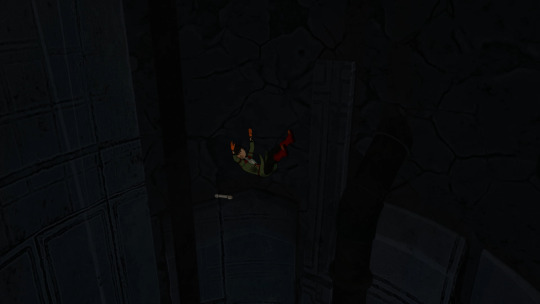
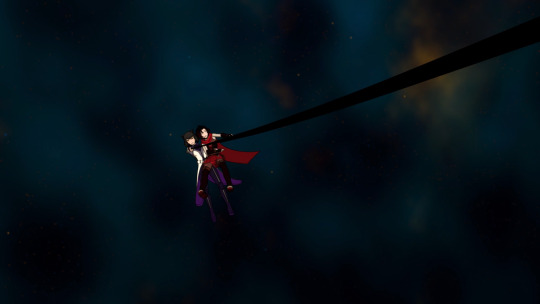
They both "fall" in the previous season's finale.
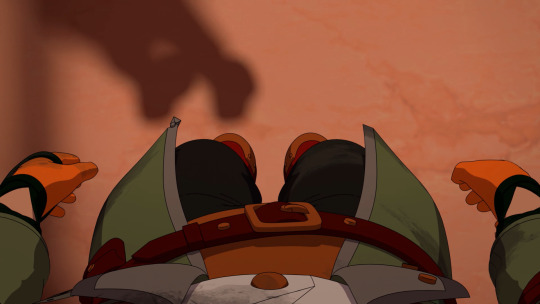
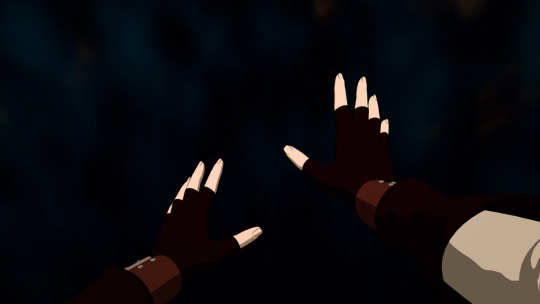
Point of View Framing when they're both in moments of intense stress.

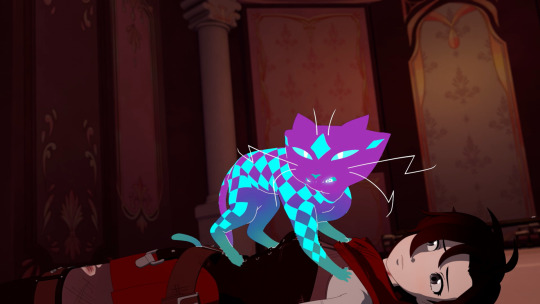
Hound created by Salem vs. Cat created by Brother Gods as antagonists.
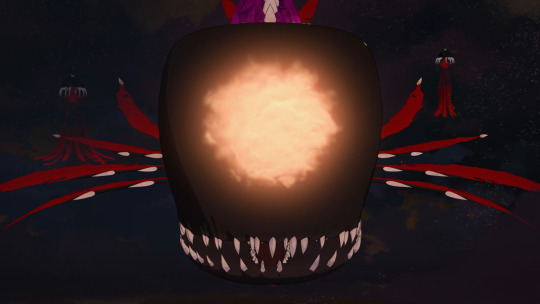
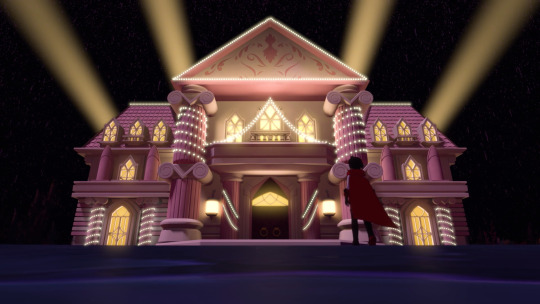
Isolated from their friends and brought right to the enemy's lair (Oscar kidnapped and brought without choice vs. Ruby choosing to leave but finding her way there by chance).
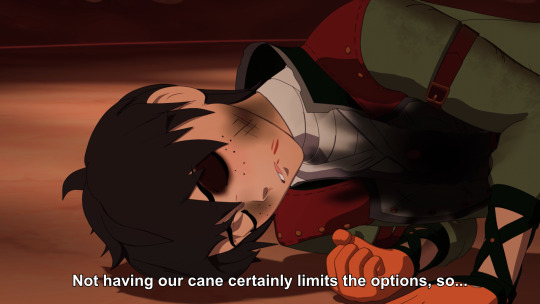
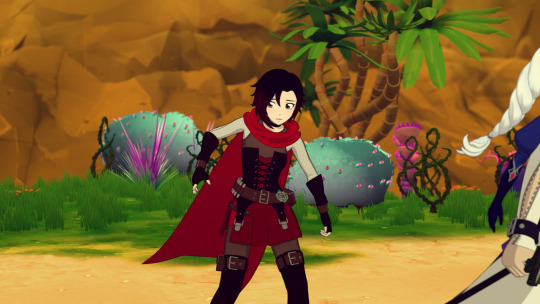
Both having to go a large portion of their respective volumes without their weapons.
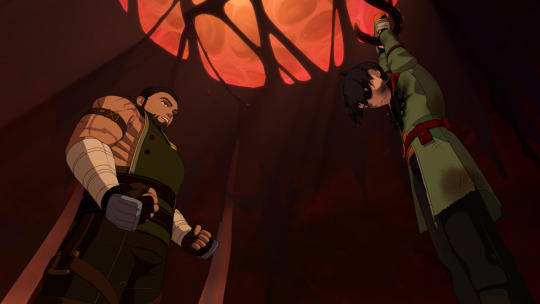
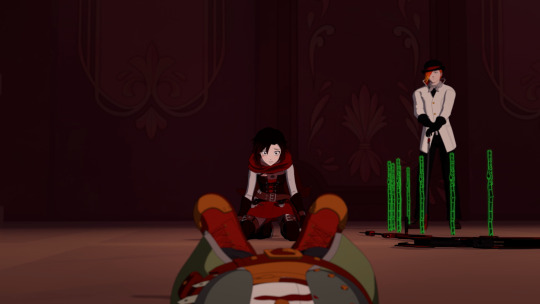
Physical torture vs. psychological torture.
Both at the hands of enemies from their past (Oscar V4-5 + Oz's history with Hazel and Salem vs. Ruby V1-3 with Torchwick and Neo).

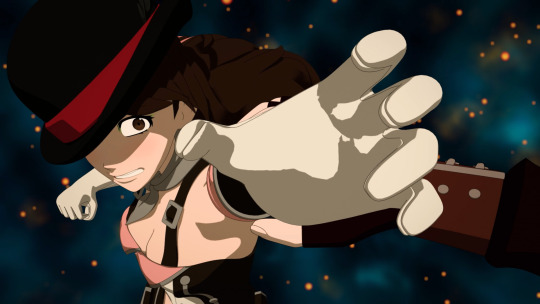
Illusionist that helps vs. illusionist that harms.
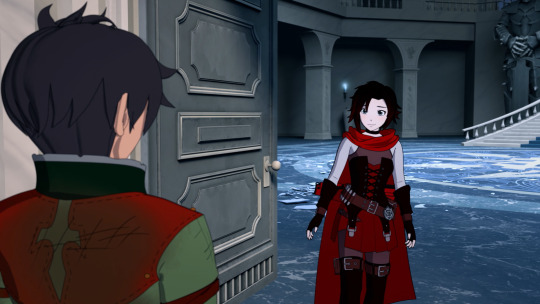
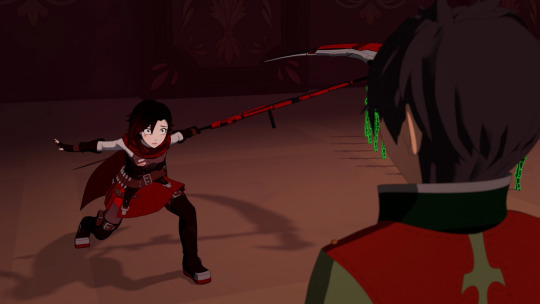
Happy reunion, vs. horrifying reunion
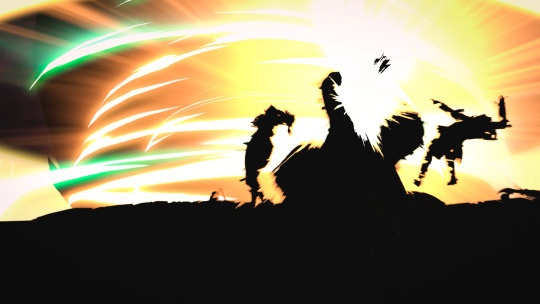
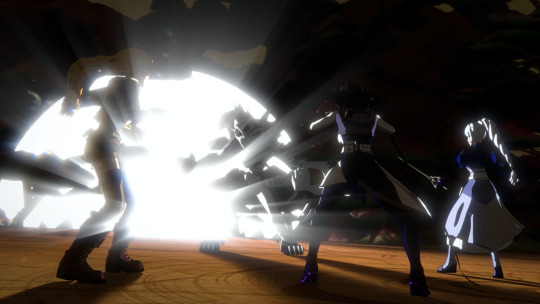
Explosion of gold vs. silver magic when escaping.

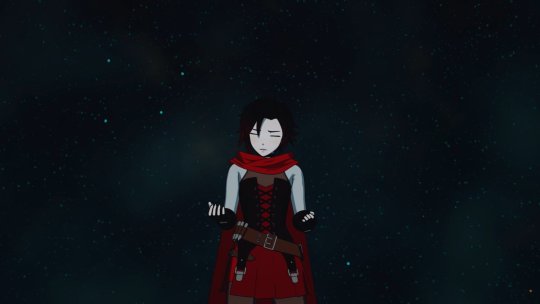
"I was stupid to think the General would listen. Every choice I've made was the wrong one, and now-" vs. "I just wanted to do the right thing but every step of the way it's like there is no right thing. I tried so hard... and I may have just done more harm than good."
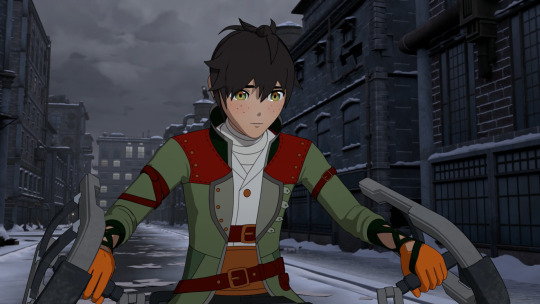
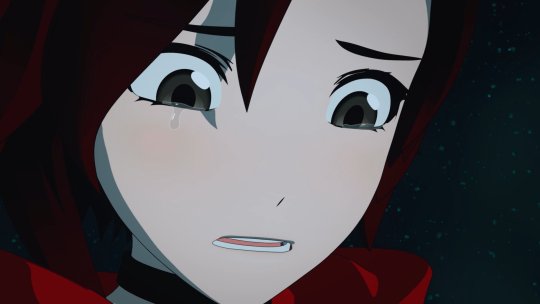
"I started to feel like me. Not the same me I was before all of this, but... the me I always wanted to be." vs. "I don't understand who I need to be. Because who I am right now... she's not cutting it."


"Our souls are still on the inevitable path to becoming one." / "But I don't want that." (alternatively: "I'm just going to be another one of his lives, aren't I?" circa v5) vs. "What if you could be anyone?"

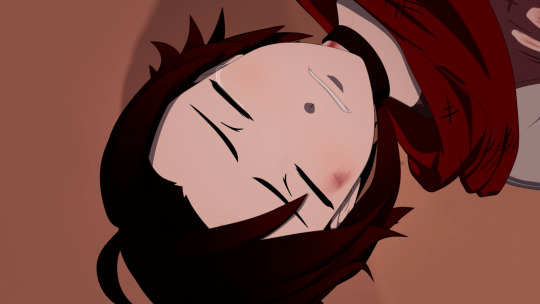
"She wasn't the same girl anymore." vs. "I don't want to be me anymore."
296 notes
·
View notes
Note
This is me trying to avoid the slaughterhouse for what I'm about to suggest (there's a good chance I'll get cooked alive anyway).
I'm not sure where you stand with Penny and Ruby's relationship, but I wanted to get your opinion on my interpretation (sorry to put you on the spot).
I interpreted Penny as the little sister Ruby never had. I think that CRWBY wanted to put Ruby in Yang's shoes during the Atlas Arc, since that was the main internal conflict within team RWBY.
Yang spent her childhood trying to protect and raise Ruby. She tried so hard to be the best big sister she could be so Ruby wouldn't ever have to suffer the same pain she felt... the pain she felt twice, with Summer disappearing and learning that Raven abandoned her. She gave up everything for her.
I saw Ruby as stepping into that role for Penny. There was that parallel, about friends. Ruby asking if Penny made any other friends, compared to when Yang asked Ruby to make some friends at Beacon.
Ruby always trying to comfort and protect Penny, even at the cost of her own safety (yes, any friend would do this, too).
I don't know, that's just how I saw it. The Atlas Arc very much was about changing perspectives, with them also being put into Oz's shoes after he left, needing to make the hard choices, prioritizing what to tell and what not to tell.
I thought since Yang and Ruby's rift was most prominent during that arc, that she was also being put into Yang's shoes with Penny. Just like Yang was put into Ruby's shoes and taking charge of her own team.
(That being said, I do see the appeal of a romantic relationship, but I was much more interested in the Potential of it, the symbolism and parallels, rather than it actually being canon.
Another statement that might get me slaughtered is that I wouldn't have liked if it became canon while Penny was alive because it felt like Penny contributed to the weight on Ruby's shoulders. She was extremely codependent on others (TOTALLY UNDERSTANDABLE and just like Ruby was with Yang at the start at Beacon) and if I was to like the ship in canon, then Penny would have had to stay alive and go to Vacuo while RWBY fell (guess Jaune wouldn't have a reason to fall anymore), and learn how to be independent.
Even then, I'd feel horrible for Penny because she hated being the Winter Maiden, and if she survived, she would no longer just be protecting Mantle and Atlas, she'd be protecting the entire world. Though... she wouldn't be doing it alone anymore. She'd have the rest of the world to back her up.
I dunno, sorry for the ramble, and sorry if you are offended (I get it, homophobes like to use the "they're just sisters argument with a lot of wlw ships, but I promise there's no malicious intent behind my interpretation. Plus, I just recently discovered and am exploring my own sapphic identity).
But yeah. I hope they don't come for me for this. I decided I'd rather talk with someone about it rather than post it as a statement. It feels like it'll come off differently as a civil conversation.
(it's greentea)
Hi!
Don't worry, it is fine for me to discuss anything, as long as people are polite!
So, this is a very interesting take and I agree on many things, while I interpret others differently. If you are interested, you find my 2 cents below.
PREMISE
So, let's make it clear where I stand on ships. I am not a multi-shipper, so I am really not that passionate about ships unless they are canon or I think they are becoming canon by the end (obviously I may always be wrong in this second case). When it comes to Ruby, I think Rosegarden is gonna be endgame, so I am mostly focused on this ship.
That said, I think that so far Ruby has shown no romantic interest in anybody:
Ozpin: Not enjoying yourself? Ruby: Oh, no, everything's fine! I'm just not much of a fancy pantsy… dancey girl. Ozpin: Well, you can't spend your whole life on the battlefield, even if you may want to. Ruby: Yeah, that lesson's been floating around a lot lately. Ozpin: If you think about it, fighting and dancing aren't so different. Two partners interlocked, although one wrong move on the ballroom merely leads to a swollen foot. Ruby: Or a twisted ankle.
In Atlas, she is uninterested in Renora's romantic conflict. In volume 9, she is the only one who doesn't get Weiss's crush on the Rusted Knight and Bumbleby's developing attraction. Basically, Ruby's focus is really not on romance and that is (imo) for 2 reasons:
She is focused on the mission and the macrochosm, rather than on her personal life
She is in a different development stage when compared to the others. In short, she is younger
Obviously, younger people fall in love too (I mean, puppy love is a thing) and everyone develops romantic feelings (if they even do) at different ages. However, RWBY is a story which makes use of metaphors and archetypes to describe the characters' inner journeys. This happens with Ruby, as well.
In particular, volume 9 has Ruby going from childhood:

To adolescence:
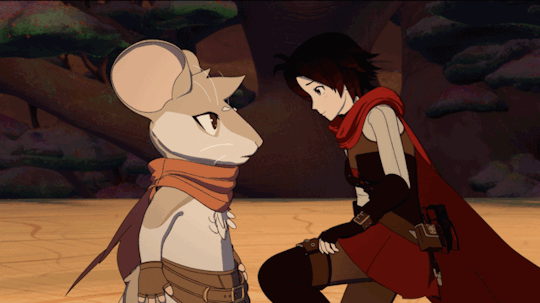
Little becomes Somewhat. Ruby becomes Someone. Neither Somewhat nor Ruby have figured themselves out. Still, they have grown and stepped into a new phase of their lives.
Well, I think that after this inner transformation Ruby will be more open to romantic relationships. In short, I think the Vacuo arc will focus on Ruby and Oscar's bond, which will grow to be romantic on both sides.
So, where does it leave Penny? I think Ruby and Penny's dynamic can be read in 2 ways:
A platonic friendship (my preference)
A bond, which could have developed into a romantic relationship with time once both Penny and Ruby grow
Ironically, I think the platonic interpretation is deeper and is better to explore Ruby and Penny's dynamic in canon. That said, there is nothing wrong about headcanoning a romantic attraction in a what if scenario.
In any case, it doesn't really matter because Penny is dead and personally I don't think she is coming back. Of course, there are people who feel differently and that is alright. I simply want to make clear the frame I am using.
That said, I don't think it is coincidental that so many people ship Penny and Ruby together. As a matter of fact Penny and Ruby's bond is very important and will be important for Ruby and Oscar's story, as well. After all, Penny and Oscar have been set up as foils since the very beginning:
Ruby: But at this pace, you'll be combat ready in no time! Suddenly, Ruby frowns upon mentioning her last phrase. Oscar notices this and tries to ask a question before Ruby interrupts him. Oscar: Uh…
In the dojo scene, Ruby unconsciously compares Oscar and Penny. This is also the first time Ruby indirectly brings up her friend before meeting her again in Atlas. In short, Oscar and Penny are linked when it comes to their arcs and what they mean to Ruby. So, Ruby's feelings over Penny's death are gonna be important for her dynamic with Oscar (and many other things, of course). Let's now focus on what Penny represents for Ruby.
PENNY AS RUBY'S INNER CHILD
I interpreted Penny as the little sister Ruby never had. I think that CRWBY wanted to put Ruby in Yang's shoes during the Atlas Arc, since that was the main internal conflict within team RWBY.
I like this take. I think it is interesting how you parallel Ruby and Yang's journeys in Atlas. Ruby becoming a big sister to Penny and Yang acting as a leader of her own faction.
That said, I think Penny's role in Ruby's arc is wider and it doesn't start in Atlas. Since the beginning, Penny represents Ruby's inner child:
A person's supposed original or true self and the part of the personality that still reacts and feels like a child.
Penny arrives at Beacon and is immediately presented as a Ruby up to eleven:
Penny: Sen-sational! We can paint our nails, and try on clothes, and talk about cute boys! Ruby: Oh, is this what it was like when you met me?
Just like Ruby, her initial objective is to make friends. Just like Ruby, she is sweet, innocent, hopeful and can wield lethal weapons:
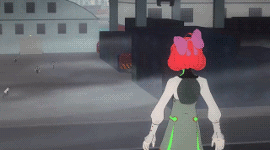
Ruby grows close to Penny because of these similarities. At the same time, Ruby is immediately not only supportive of Penny:
Ruby: You're not like those things we saw back there. You've got a heart, and a soul; I can feel it!
But also protective in a way, which is uncharacteristically strong:
Penny: Ruby, are these people your friends? Ruby: Penny, get back! AAAAAH! Ruby: Penny, wait! Stop! Penny: Don't worry, Ruby. I'm combat ready!
Finally, Penny's death is what breaks the peace and happiness of Ruby's school days:

The fall of Beacon starts with Penny's dismemberment. That is the moment Ruby's world breaks and she crashes down in shock. However, she is fast to get back on her feet and immediately uses Penny's sword to fight a Nevermore:
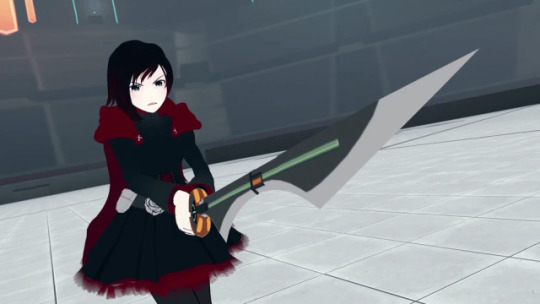
The metaphor is clear. The Nevermore embodies grief (see Poe's The Raven) and Ruby deals with it with her inner faith, which is represented by Penny's sword.
Atlas is just the repetition of this story. Penny arrives like a ray of hope in the grim situation the heroes are. They have just discovered Salem can't be killed and Ozpin has left them. Still, a lost friend appears out of nowhere and brings new happiness to the characters:
Penny: It'll be just like Beacon again!
Thanks to Penny, Ruby is able to go back to her happy place. She is back at Beacon with her friends all working hard to become extraordinary Huntresses and Huntsmen. Sure, some things have changed, but Ruby can find solace in the things that haven't. This is why Ruby's line to Pietro is so telling:
Ruby: Even if the worst does happen, you can always reactivate her again, so maybe try not to worry so much.
Pietro is worried about Penny's well being and Ruby tells him not to because if push comes to shove Pietro can just revive Penny again. Ruby clearly sees Penny as an ideal existence that can defeat death. However, Pietro is quick to shoot down this belief. This is foreshadowing for Penny's eventual death and how Ruby will have to accept it. Penny's second death brings out all the negative feelings Ruby has been repressing:

The scenario is the same of the one at Beacon, but this time Ruby can't stand up and struggles to find Penny's sword again:
Jinxy: Enough hope to fill this jar.
She has not enough hope to wield her inner blade anymore.
It is deep down still there:
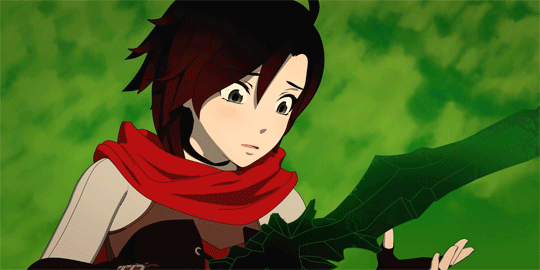
Ruby: I… I thought this was lost forever. How’d you have it? Blacksmith: Nothing. No one is ever truly lost.
However, Ruby can't see it.
In other words, Penny is symbolically linked to Ruby's hope. She is the embodyment of the inner child that shines within Ruby and brings light to others. Still, Ruby is growing up. The coping mechanisms that worked as a child are starting to lose their grip on her.
It is not by chance that in Atlas Ruby struggles to use her silver eyes. She finds an inner equilibrium in volume 6, but Salem's words in volume 7 are all it takes to throw Ruby off:
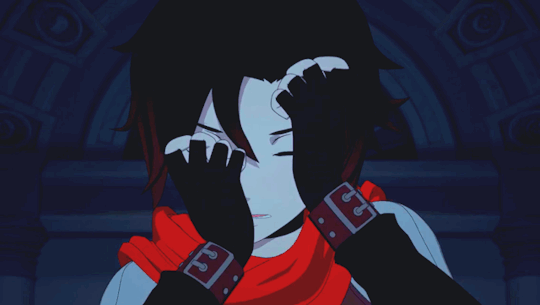
After that, Ruby manages to sucessfully use her eyes only when Penny is in danger:
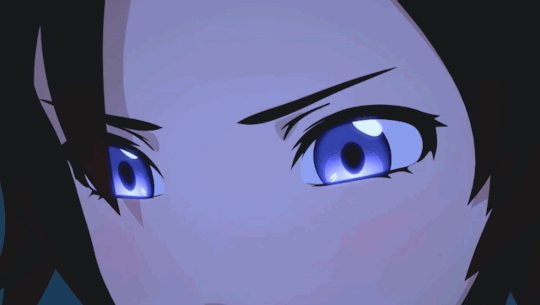
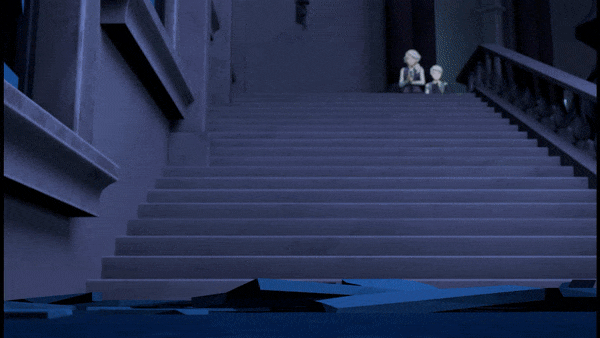
So, symbolically Penny is the one keeping Ruby together. This is why she is undone the moment Penny dies. Penny's death marks the end of Ruby's childhood.
Volume 9 is really Ruby grieving her child self in Penny. This is made clear by Little, who is Ruby's innocent self and shares many similarities with Penny. They love hugs and friends and Ruby. They are hopeful and want to grow up and help others. They are both Ruby and Penny in a nutshell.
So, Ruby's final goodbye to Somewhat is really Ruby saying goodbye both to her child self and to Penny:
Ruby: Well, uh… To me, you seem like a friend. Blake: A guide. Weiss: A protector. Yang: A…dorable. Ruby: Do any of those sound close? Somewhat: Hmmm. Somewhat. Yeah. Somewhat. I’m not any one thing, I’m somewhat of a lot of things! Ruby: It is a true pleasure to meet you, Somewhat. Somewhat: It will be my honor to serve you. Ruby: You’ve already done more for us than you know. Somewhat: You do feel… familiar. Like a happy dream I can’t remember.
She is moving on towards adulthood and self-actualization. She is working through her grief for her friend's loss.
Of course, this process has just begun:
What survives After all the dust has gone? Were you there till the end (the end)? Were you at least called a friend?
My wish came true That day that you appeared And called me friend
Penny is absent from Ruby's final confrontation with the Blacksmith (my main complaint about volume 9 ending). Still, this is clearly because Ruby is going to symbolically face her later on.
It is the same with Jaune and Pyrrha:

No more Sudden movements Please So tired, I'm sleepless And haunted by you Falling Forever Was I always just A man out of time
Both fallen maidens indirectly appear in the climax of the volume, but neither is properly addressed. They will be in Vacuo. They must be because both Jaune and Ruby are still hung up on them.
RUBY IDEALIZES PENNY
Neo-Penny: Just like you were too late to save me at the Vytal Festival… I died in Atlas too, didn’t I? Can you imagine what that's like? To be completely and utterly failed… time and again… by someone who meant the world to you…
This is the Penny Ruby sees in her head. This is in no way the real Penny. In her final moments, Penny is not looking for someone to save her, but rather she is searching for ways to save others.
In short, Ruby idealizes Penny to an extent. She sees her as someone innocent and pure to protect, but Penny is much more. Penny is her own person and her arc is about reaching self-actualization. She isn't the Pinocchio who is created by the Blue Fairy. Rather, she is the Pinocchio who creates the Blue Fairy:
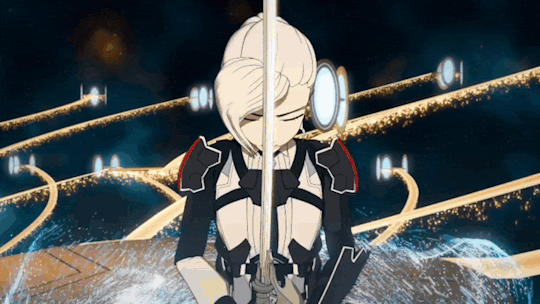
All of this to say, I disagree with this take:
She was extremely codependent on others (TOTALLY UNDERSTANDABLE and just like Ruby was with Yang at the start at Beacon) and if I was to like the ship in canon, then Penny would have had to stay alive and go to Vacuo while RWBY fell (guess Jaune wouldn't have a reason to fall anymore), and learn how to be independent.
Or to better say, I see things a little bit differently. It is true that Ruby and Penny's dynamic is one where Ruby is mostly the one supporting and Penny is the one supported. It is also true that Penny is unsure about herself because of how her life has been controlled by others. Still, the way this dynamic works is also because Ruby keeps on projecting on Penny a very frail and vulnerable part of herself.
I actually think your parallelism with Yang and Ruby's dynamic is pretty poignant. Yes, Ruby is initially dependent on Yang. Still, Yang too is clearly projecting on Ruby her guilt and belief that love is conditional. This is why Yang should let go of Ruby:
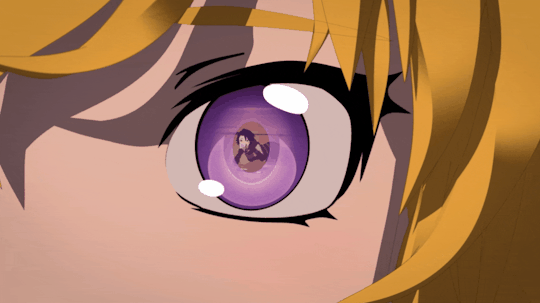
This doesn't mean for Yang to stop caring for Ruby. However, it is not Yang's fault Ruby drinks the tree tea. Similarly, it is not Yang the one who can save Ruby or decide who Ruby is gonna be. Only Ruby can do that. That is because Ruby is her own person outside of Yang.
The same goes for Ruby and Penny. Ruby is a wonderful friend to Penny. Still, it is not her fault Penny dies at Beacon and at Atlas. Finally, Penny has in herself the strength to grow up and become her own person. Something she does before dying.
If Nuts And Dolts were written to become canon, Penny should grow more self-assured, so that she could be there for Ruby. At the same time, Ruby should stop projecting her inner child on Penny.
THE CONFLICT THAT WASN'T THERE
I would like to highlight that volume 7 offers the perfect chance to change Ruby and Penny's dynamic.
As we know, Ruby's main internal conflict there is if to tell or not Ironwood about Salem's immortality. Well, if Penny were to have an arc intertwined with Ruby, so that they could grow together and end up as a couple, this conflict needed to be addressed between them.
After all, Ruby doesn't tell Penny about Salem. At least, we have no reason to think otherwise. Penny is close to Ironwood and Winter and trusts easily. So, it is to be expected that if she knew, she would insist to tell the Atlas higher ups. So, not only is Ruby hiding info from Ironwood, but also from her friend. She obviously does so not to put Penny in a thight spot.
However, if Penny were written to grow into Ruby's partner, I think she should have entered a minor conflict with Ruby over this. In volume 8, Ruby not telling her should have been mentioned and Penny should have called Ruby out. She should have demanded Ruby to trust her more.
So, why doesn't this happen? Simply because imo Penny and Ruby are not written to be endgame. Moreover, the ones who enter a conflict with Ruby over this are Yang and Oscar. In particular, Oscar gets the part of the conflict, which could have easily been Penny's. He is the one who grows the closest to Ironwood. He is the one General objectifies. He is the one who eventually reveals the truth. He is the one who faces Ironwood in a last desperate attempt to get through to him.
Obviously, there could have been many other ways to write Penny and Ruby as a ship. Still, Penny is right now dead and her arc is done. In general, Penny and Ruby's arcs are not even that intertwined structurally:
Penny's arc is about reaching personhood through making difficult and tragic choices. She explores the theme of humanity, duty vs want and faith. Finally, her destiny in the sense of final goal is linked to "friendship". Her final choice is to say goodbye to Winter and to solve their conflict. She also chooses her friends over her duties as a Maiden. The character at the centre of her arc is Winter and not Ruby.
Ruby's arc is about overcoming Summer's death. She is a wide-eyed child, who is confronted with the darkness of the world and has to resist it. She must keep her idealism in the face of the worst happening. The characters at the centre of her arc are honestly Summer and Cinder so far. Still, I think Oscar will be key, as well. I mean:
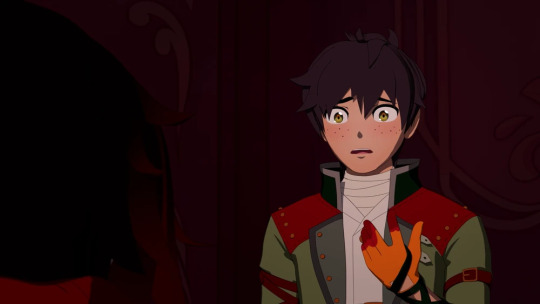
Foreshadowing is foreshadowing.
That said, Penny and Ruby are incredibly important for each other. They are linked to each other's best parts. Ruby is the first to recognize Penny's humanity. She is Penny's guide and inspiration to grow up. Penny reminds Ruby of her most innocent and hopeful side. She is an even more simple soul than Ruby herself.
So, I personally don't ship them, but I can understand why people are passionate about their relationship. As for me, I am more interested in their individual arcs and what they have to say. Thank you for the ask!
36 notes
·
View notes
Text
writing ruby & blake as partners: it's about protecting your inner child, keeping the spark of hope alive no matter the odds, there are no answers only the desire to make the world a better place than it was yesterday. two beautiful flowers, one with thorns and the other highly poisonous. every light needs its shadow for it to not be blinding and every shadow needs its light to not get lost in the darkness as silver meets gold.
writing weiss & yang as partners: 'oh, not you again' part TWO!! fire and ice, the princess and the dragon, two opposites to such extremes and so stubborn that no one thinks it will work. but, after lots and lots of bickering, somehow... it does. they find a common ground, learn to compromise, the ice melts a little as the fire cools off, the bickering turns into teasing and oh boy do people wish they had stayed a bickering mess focused on each other bc one wrong step and still, the ice bites and the fire burns, except this time it's not just one of them, it's both.
166 notes
·
View notes
Text
Worthy
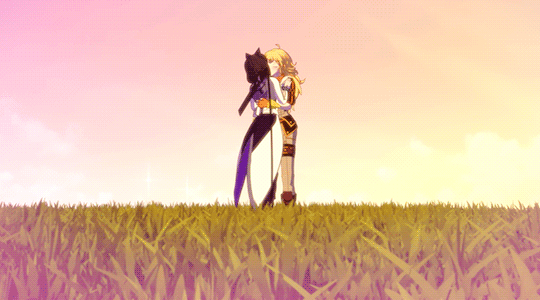
I love the new RWBY soundtrack! So, before delving into longer metas on volume 9, I want to share a quick analysis of Bumbleby's new song.
BUMBLEBY VS CINDER
As many have highlighted, the song shares its title with episode 8X13.
This episode is interesting for 2 reasons:
It is a Cinder's centric episode
It is when Yang falls leaving Blake behind
Our Maiden of Choice is one of the strongest foils to our protagonists. In particular, she ties into all the MCs's allusions as an antagonistic force. This is particularly clear in Ruby and Weiss's stories, as she plays Ruby's Big Bad Wolf and Weiss's Evil Queen.
What about Bumbleby?
Cinder is a personification of Blake's Beast
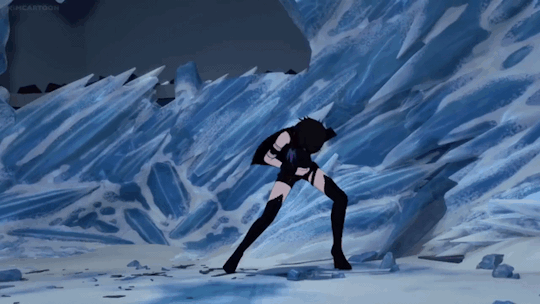
The Beast is the Jungian Shadow, which represents everything hidden and repressed. Blake integrates her shadows and brings them to light. Cinder is instead consumed by her darkest parts, as her Shadow Hand shows.
Cinder embodies Yang's too hot
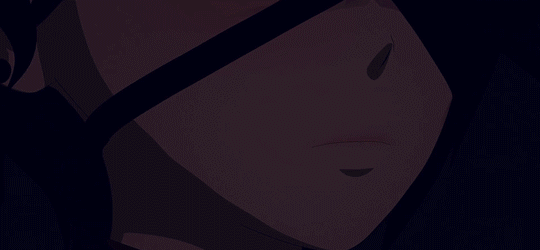
The too hot is a metaphor for asymmetry and anger, which are core traits of both Yang and Cinder. It is just Yang accepts her own asymmetry and faces the feelings of vulnerability she masks with rage. Cinder instead doesn't aknowledge her emotions and her hurt.
In other words, Cinder embodies Blake and Yang's flaws and represents an obstacle in Bumbleby's fairy tales. This is why in the finale of volume 8 she re-enacts the 2 girls' traumas.
She manipulates things, so that Yang has no choice, but to go too hot:

And Yang's fall has Blake go feral:

The whole scene is a repetition of Blake and Yang's two fights with Adam. Yang protects a loved one and loses her arm as a consequence (Jinxy steals it in the Ever After). Blake sees Yang get hurt and has her weapon damaged (only the ribbon this time).
This happens so that Blake and Yang can prove they are now stronger than before. They are worthy:
And now I know I'm worthy of you
In the end, both Cinder and Bumbleby have to show their worth. Still, this word gains different meanings for the bees and for our Cinderella. Let's see why by analyzing the Worthy song's lyrics.
BLAKE'S PART - FALLING
Why did Why did I come here? Was I always meant to take this shape? Never was given a love like this A parachute falling with no fear of hitting the ground Hitting the ground You fell And suddenly I did too While the world was dying Didn't know how to not lose you again
Blake's lines tie her and Yang's romantic dynamic to their fall in the Ever After.
You fell:

And suddenly I did too:
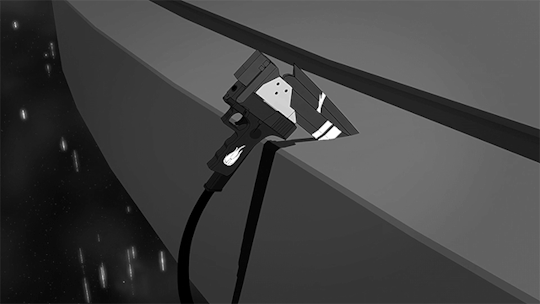
While the world was dying, (I) didn't know how to not lose you again:

The metaphor is rather clear. Yang falls for Blake first, while our Cat Girl struggles with her feelings for Adam and her attraction to Sun. Still, Blake finally falls too and the two bees find themselves in (Happily) Ever After, where they get together:

The falling imagery is mentioned in the confession scene, as well:
Yang: (in thought) It's like a cliff. And if I do it, I'm just going to fall. Blake: (in thought) I think we're already falling. (turns to Yang) Just, say it, Yang.
Never was given a love like this A parachute falling with no fear of hitting the ground Hitting the ground
As the song states, Blake was "never given a love like this". The comparison is clearly with Adam's passion, which was violent and abusive. Blake feels the bond between her and Yang is different. This is why she is not scared of falling, as if she is wearing a parachude. She knows Yang is there to catch her.
YANG'S PART - CATCHING
Hands down Heart wide I've only ever known the fight But I'll catch you This time I'll never let you out of my sight Unguarded I Surrender to a softer side I loved you, I'll love you Till the end of time Kiss me Hold tight I'll never let you out of my sight
Yang symbolically catches Blake in the song, so that the falling metaphor is completed. The meaning is clear.
Falling is a risk, but risks are necessary to truly live:
Yang: You were being optimistic. Look, blind optimism isn’t great, but no optimism means we already lost. We need hope. We need to take risks.
So, Yang herself takes a risk and makes a leap of faith:
Yang: I think I love you.
And she is promptly caught by Blake:
Blake: I love you, too.
By this point the two hold thight and kiss each other:
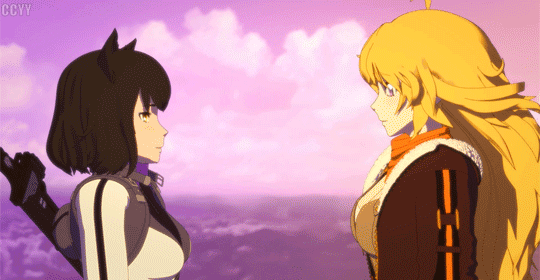
Yang taking this step is important because she is scared of vulnerability and intimacy.
She only knows the fight:

And yet, she faces Blake with her hand(s) down and her heart wide:
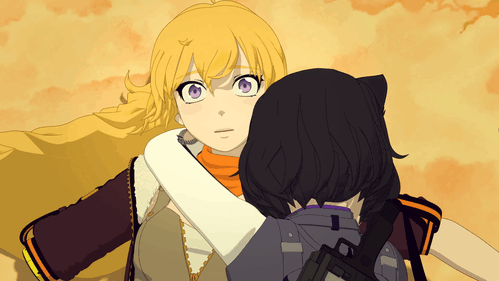
She surrenders to a softer side:

She trusts Blake not to leave and is determined not to let her out of sight. It is great development when compared to this:
You're lost You're found You're hard to pin down I never know if you'll come through Then you appear Together we're here And that's all that matters somehow
The scene happening on a bridge over the void strengthens the implication. If Yang and Blake's feelings were not mutual, they would have crashed down. Still, they love each other, so they embrace in a beautiful garden.
TO EACH OTHER - BMBLB
Voice 1: And now I know I'm worthy of you Voice 2: (Oh can't you see, you could be with me) Voice 1: With every smile you told me, "I love you" Voice 2: (I am your dream, I love you)
Baby can't you see? You could be with me We could live inside a garden of ecstasy You could be my queen I could be your dream Our lives like a fantasy Maybe set me free? Let me be your bumblebee
Bumbleby's kiss fits the scenery described by the Bmblb song.
Blake and Yang are in a garden and their confession "chases away the darkness and gloom" by making "the clouds run from the sky":

They are metaphorically making honey:
Like a Purdie* beat You are oh so sweet Every day is sunny, tastes like honey Feel so alive take me back to the hive
Which is why the flowers surrounding them bloom magically. Fitting for bees, right?
TOGETHER - SEEING AND STAYING
See me for everything I am You don't run away No matter the mistakes I made It's here, you'll stay
This stanza is the climax of the song and it conveys its most important message.
Why are Blake and Yang finally able to be togehter? In which way have they grown?
Yang sees Blake for everything she is:
Yang: Well, Blake, I'm Yang, Ruby's older sister! I like your bow!
Yang: You have cat ears! (…) I think your cat ears are cute.
The juxtaposition between these two lines sums up our Yellow Beauty's development.
Yang has always been attracted to Blake, but she is initially unable to see her as a whole. This is what the bow line alludes too. As a matter of fact Blake's bow is symbolic of the girl's shadow, as she initially uses this cloth to hide who she is (her beats part). So, Yang's first interaction with Blake shows she is drawn even to Blake's darkest parts. However, she is not mature enough to understand them completely.
It is only through her personal arc that Yang becomes able to see Blake for the person she truly is. Beautiful and ugly parts alike:
Weiss: You're right though. I don't know loneliness like you do. I have my own version. And, I'll bet Blake has her own version too.
This is why she can now openly praise Blake's animal trait.
Blake too has grown, of course. She gets irritated by Yang's bow compliment because, at the time, it hits a little close to home. Right now, she displays her ears openly and is flustered and happy by Yang's words. She doesn't hide herself anymore.
Blake is ready to stay:
Never thought that you would stay forever / Never asked you to commit your life
Blake: I have people who actually care about me, and I promised I'd never leave them again. So I'm not dying now.
Blake leaves Yang when our Golden Beauty is at her most vulnerable. This hurts Yang deeply, but Blake works through her flaw, grows and comes back. Once she does, she is ready to do what Yang never asked her to. She commits her life:
Blake: I… I am not going to break my promise, I swear.
Blake's vow to Yang is in fact a wedding vow, symbolically. It means Blake is determined to stand beside Yang no matter what. And Yang knows Blake means it:
Yang: I know you won't.
In conclusion, Blake and Yang's growth has them see the other's flaws and accept them. This is where their worth comes from.
TO BE WORTHY
You can't just be strong, you have to be smart! You can't just be deserving, you have to be worthy!
Blake and Yang are worthy of each other not because they are perfect. Rather, they know they aren't, but accept their own shortcomings. They forgive themselves and the other, so that they can grow better together. They become more balanced inside and this results in a new found harmony between each other.
Cinder's self worth instead comes from superficial validation by people only interested in using her. She doesn't face her inner demons, but rather chooses to push them down, so that she can keep wearing the mask of a powerful woman.
This is why Blake and Yang find real self-worth, while Cinder has set up an unreachable standard for herself.
84 notes
·
View notes
Text
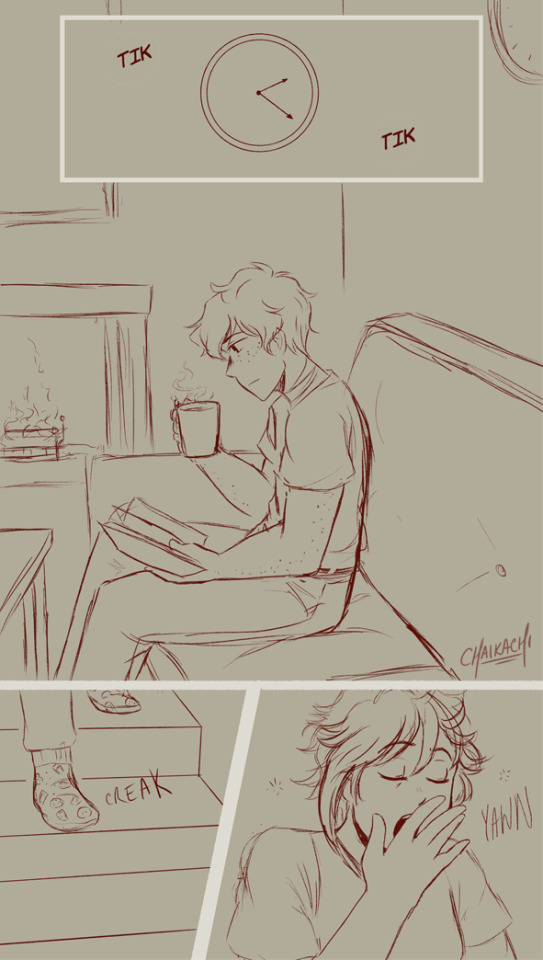
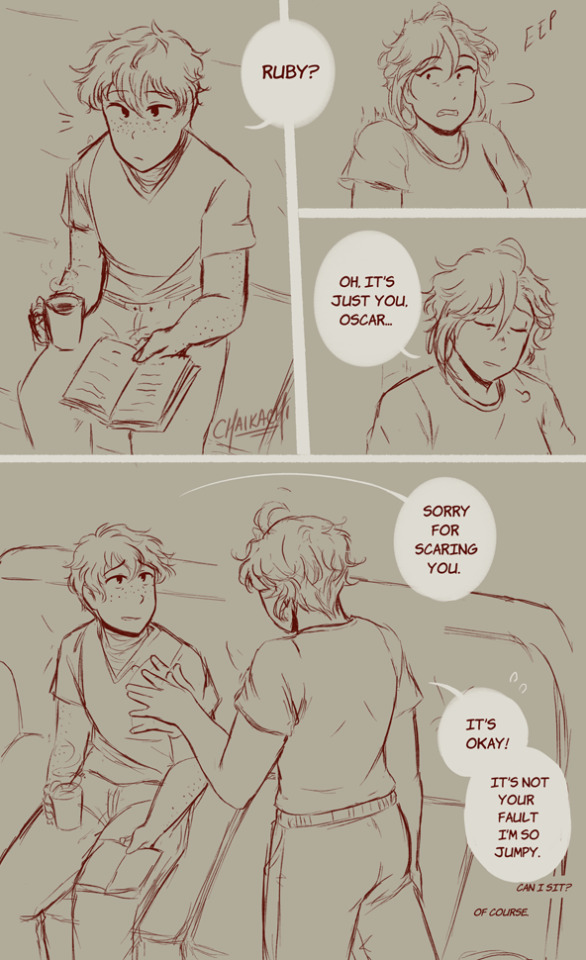
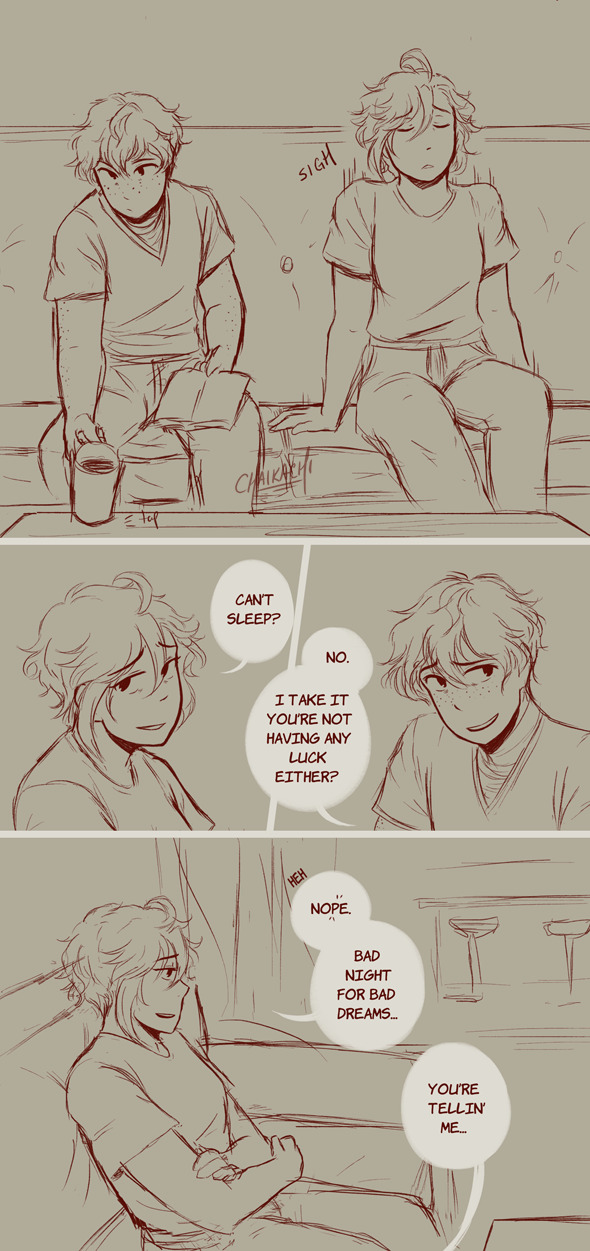
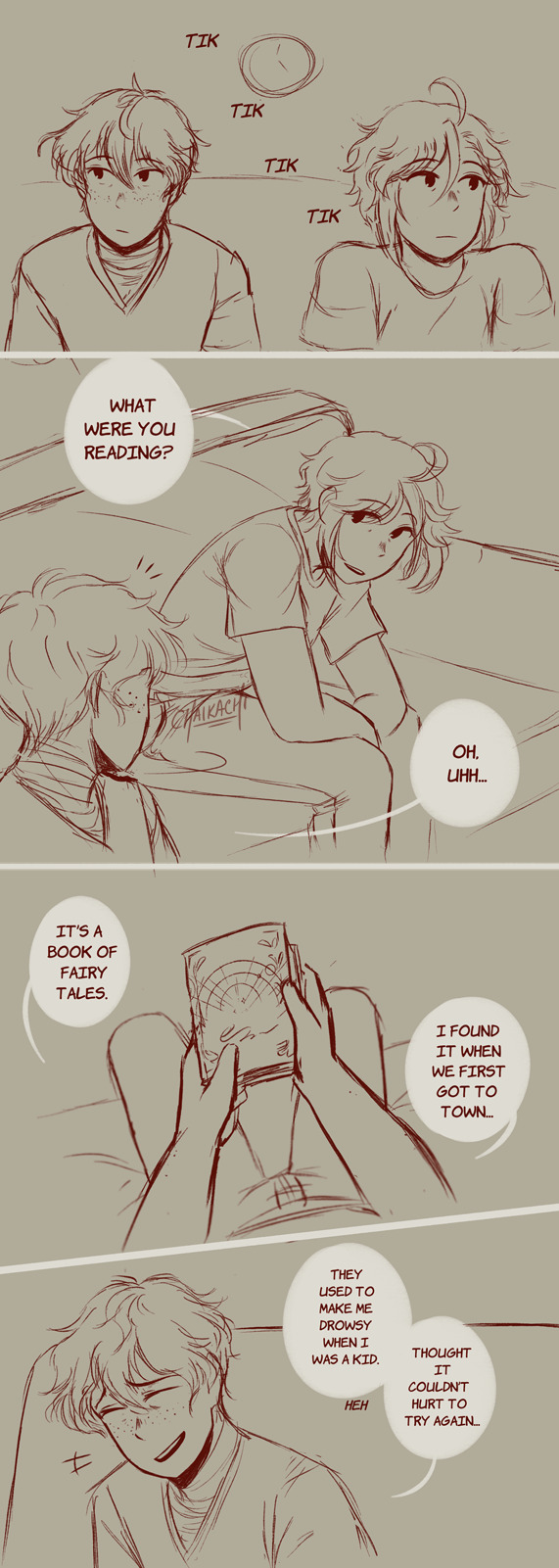
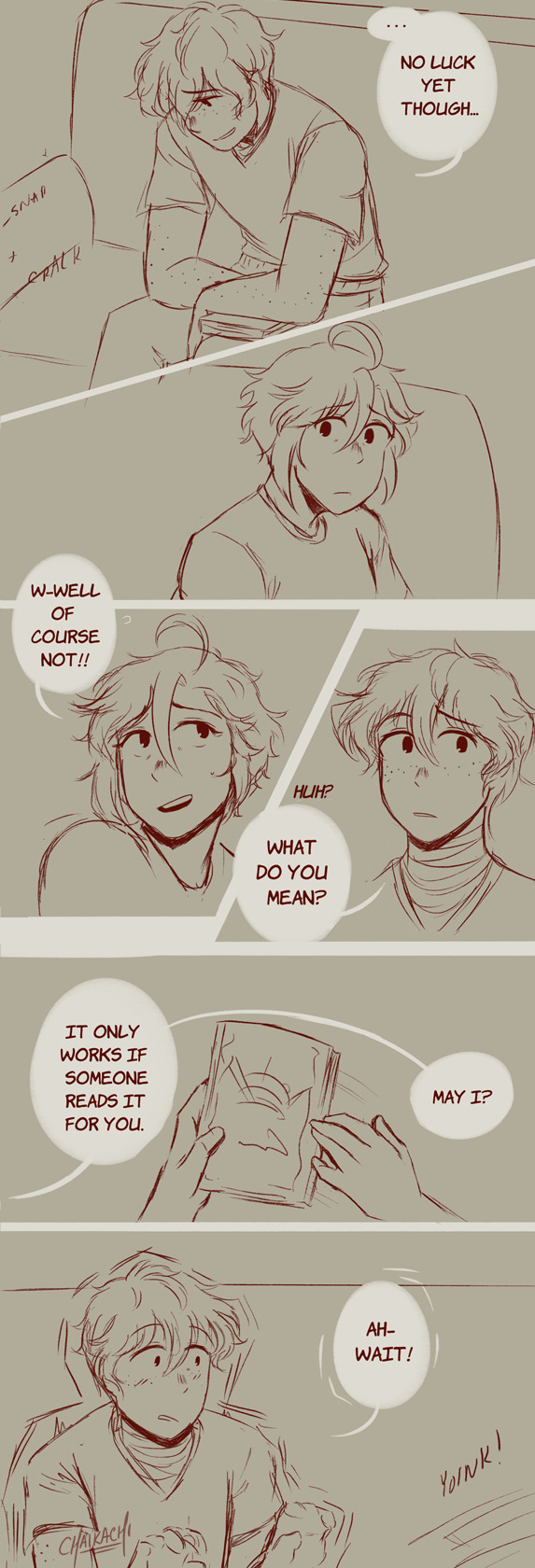
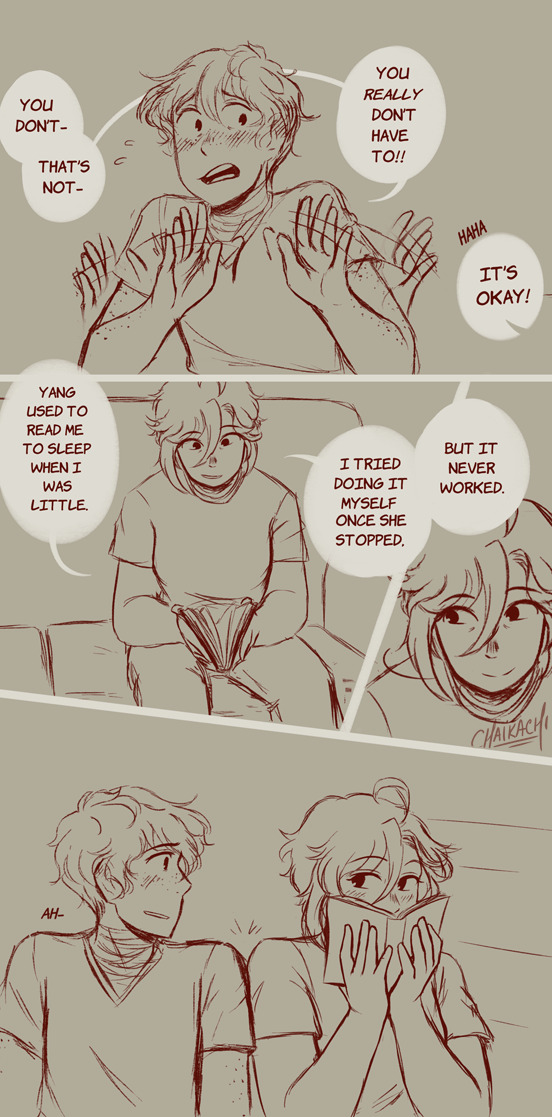
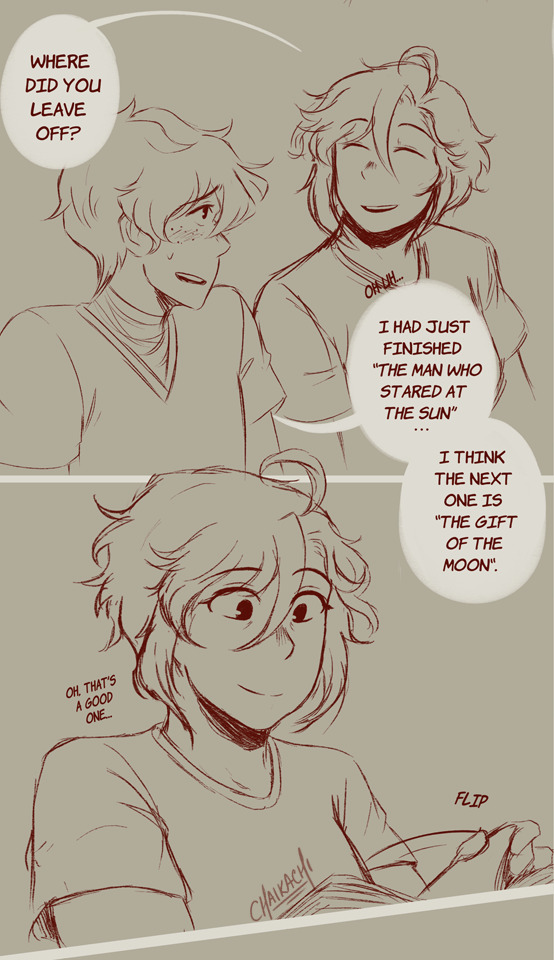
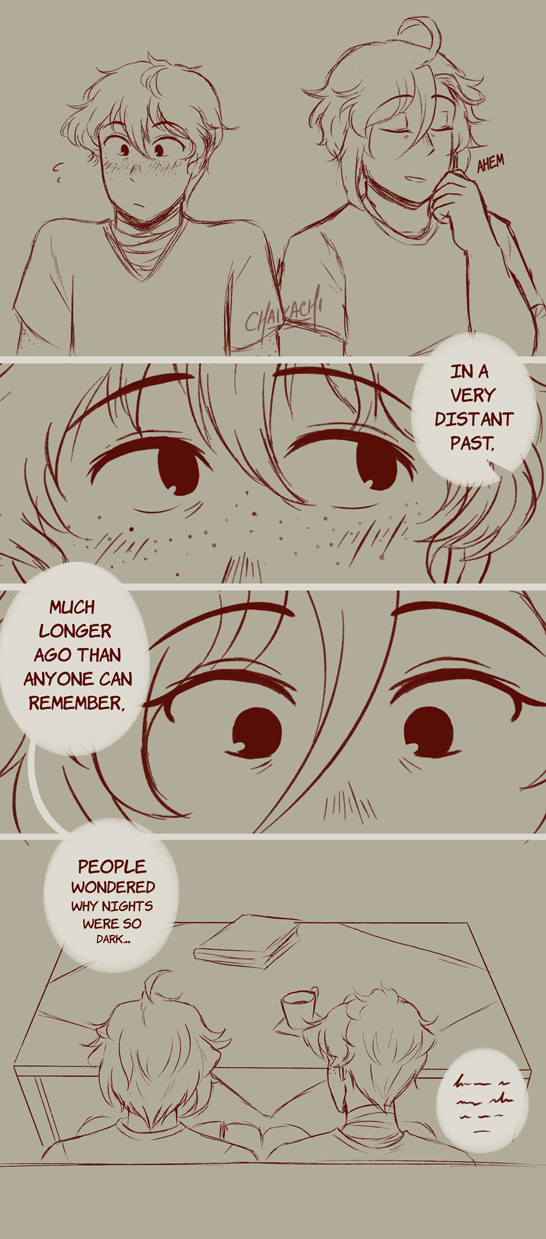
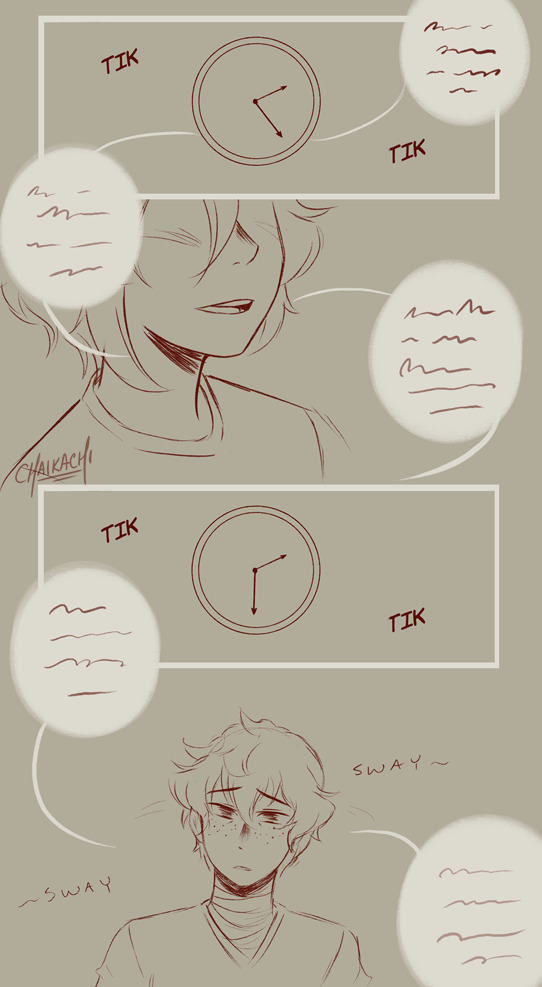
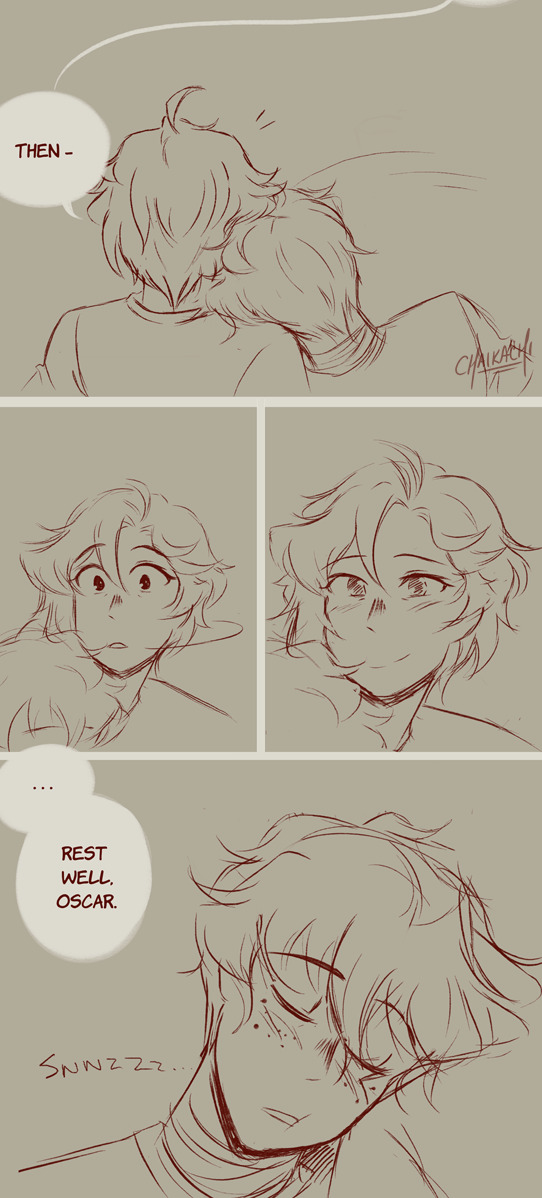
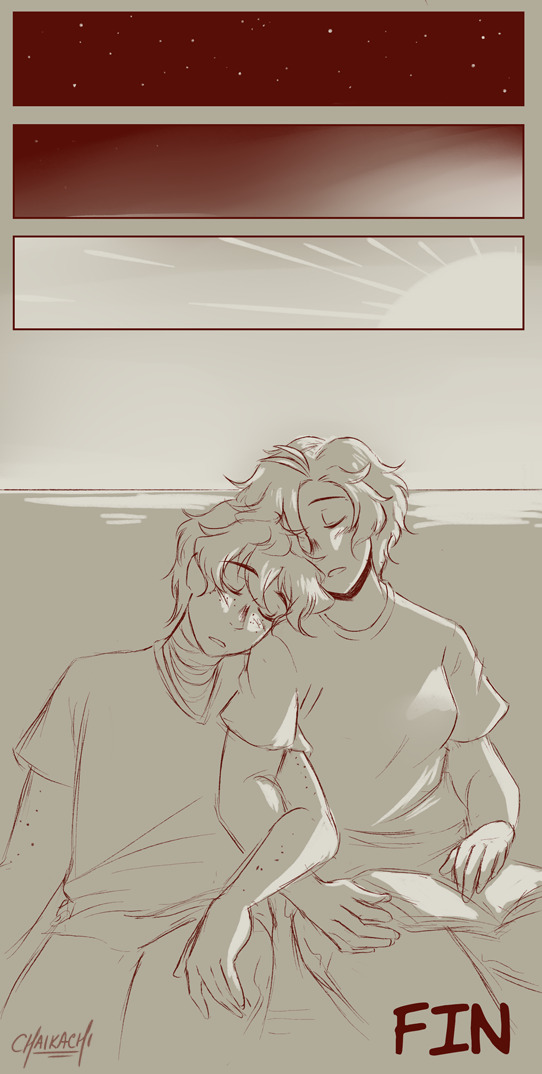
Sun & Moon: A Rosegarden Comic
Back when I first got bit by the RG bug a few years ago, I sketched out 90% of this comic and then ran out of steam. Some friends recently encouraged me to finish off the last couple pages and share it, so here it is!
I hope you enjoy! 💕🌹🌲
478 notes
·
View notes
Text
No more sudden movements please
So tired from sleepless and haunted by you
Fallen forever, was I always just a man out of time?
So this is what life is
No trouble now
Just quiet
Never knew what patience was until it’s face stared me down
Couldn’t bear to witness my own fate
My convictions the weight of it, all the failures of me, and who I couldn’t be
Through the hands of time
I was was slipping, always slipping away
All I felt I could do was wait
So this is what life is
No trouble now
Just quiet
All this is a miracle
what more can you ask for?
I really like this one. So this a Jaune song clearly. Jaune haunted by the his failures as the hero he wanted to be. Especially killing Penny and how hard he held onto the paper pleasers without moving forward for the longest time.
109 notes
·
View notes
Text
Blake's Jungle Book
The Jungle Book is Blake's secondary allusion, which is used to describe our Cat Girl's political plotline, her relationship with the White Fang and her interactions in Menagerie (her personal Jungle).

A POLITICAL FAIRY TALE
Rudyard Kipling's The Jungle Book is a metaphor for the author's moral and political beliefs. Unluckily, these ideals are not that good, as Kipling is the author of The White Man's Burden, a famous racist poem. In short, Kipling believed it was the duty of the white man to colonize and educate the "savages" (ugh).
This philosophy appears in The Jungle Book, as well (luckily not as much and together with better themes). Now, RWBY counters this by turning Kipling's premise upside down.
Kipling's works often present the English Colonialism as positive and helpful
Blake's Jungle Book shows a discriminated minority fighting for freedom, conquering violence and helping the world
So, RWBY's Jungle Book becomes an answer to the original tale. It refuses its racism, but keeps intact the vibrating characters and the powerful themes of freedom and self-discovery.
SUMMARY AND KEY ELEMENTS
The Jungle Book is not a novel, but rather an anthology of short stories that often have animals as protagonists. Among these, Mowgli's fables are the most famous and the focus of this meta.
So, here comes a summary of Mowgli's coming of age journey, which is told in several separated tales.
One night, a couple of wolves (in some versions Rama, the father, and Raksha, the mother) find a human cub and adopt him. They call him Mowgli (frog) because he is hairless. Still, the tiger Shere Khan wants to kill the baby. The matter is discussed at the pack's meeting, where Akela (the leader of the wolves), Baloo the bear and Bagheera the panther all defend the child. In the end, Mowgli is accepted into the group thanks to Bagheera offering a bull for him.
Mowgli grows like a wolf of the pack and lives several adventures under the mentorship of Bagheera, Baloo and later on Kaa the python. He follows the Law of the Jungle and feels part of the pack (the free people). Meanwhile, though, Akela grows weaker and Shere Khan spreads his influence among the younger wolves. He convinces them to antagonize Akela and Mowgli. One night, Akela fails to kill the prey, which means the other wolves can kill him. Shere Khan wants to use this chance to seize the position of leader and have Mowgli die. However, Mowgli steals a pot of fire (the so called red flower) to use against the tiger, has him run away and saves Akela. Still, the pack is left with no leader and Mowgli himself feels betrayed by the other wolves siding with Shere Khan. So, he leaves the jungle and goes to live with the humans.
In the human village he is adopted by a woman called Messua and starts herding the buffalos. One day, he is reached by one of his wolf brothers who warns him Shere Khan is coming to kill him. Mowgli decides to attack first and has the buffalos run over the tiger, who is stomped to death. A human hunter sees this and enters a fight with Mowgli over the tiger's skin. The hunter turns the other villagers against the boy, who is forced to leave. He goes back to the jungle, where he is now considered a king, as a result of him killing Shere Khan.
However, the humans think of Mowgli as a demon now and lash out against Messua. They have the woman and her husband tied up to be executed. Mowgli frees them and then decides to destroy the village. He asks for the elephants' help and has them stomp over all the fields. In this way, the humans are forced to relocate and the village gets engulfed by the animals and the vegetation.
Some time later, a new wolf pack is born, but they are soon threatened by the red dogs, who are very aggressive and kill everyone in their path. Mowgli decides to fight together with the wolves and asks for Kaa's advice. The python helps Mowgli lead the dogs where the bees live. The insects emerge from their nest and kill half of the group, while the other half is defeated by the wolves. In this fight, Akela finally dies and tells Mowgli to go live with the humans.
Years later in spring, Mowgli follows Akela's advice and goes to another human village, where he finds Messua again. He goes to live with her and says goodbye to the jungle. Bagheera kills a bull just like the one he offered for Mowgli's safety in the beginning. This is the panther's goodbye and he, Baloo and Kaa all bless Mowgli, as he leaves.
Mowgli's story deals with themes key to Blake's arc.
1- Freedom
Your hopes have become my burden. I will find my own liberation…
Mowgli's pack is called the free people and Blake's White Fang fights for the faunus's freedom. Not only that, but the jungle animals call each other's brothers and sisters, just like the faunus in Menagerie do.
Bagheera went on, "Open your eyes, Little Brother"
Ghira: It's your brothers and sisters.
So, both Kipling's animals and Blake's faunus explore freedom. On the one hand the jungle animals follow the Law of the Jungle and are noble and free because of it. On the other hand the faunus must decide if giving up their own morality is a price they want to pay for their liberation.
Does being free mean you chain someone else up? Or is there another path to freedom?
2- The animal/human dychotomy
Past Blake: It’s simple, really. You could just be human, or just a cat, if you wanted. Really, it’s up to you. Blake: Why would I do that? Past Blake: Like I said, it’s simple, much simpler than trying to be a bridge between Humans and Faunus. Why struggle with that responsibility?
Mowgli and Blake are both animal and human. This in itself is a double-edged sword. On the one hand they find friends and allies both among the faunus/animals and among the humans. On the other hand they sometimes feel they don't belong anywhere. This conflict is explored by them moving freely between the 2 worlds.
Mowgli goes back and forth between the jungle and the human village:
He grows in the jungle, but leaves after the fight with Shere Khan
He lives in the human village for a while, but things do not work out and he goes back to the jungle after killing the tiger
He becomes an adult in the jungle, where he grows powerful enough to lead his pack against the red dogs
He finally chooses to start a new life among humans
Blake goes back and forth between Menagerie/the White Fang and Remnant/team RWBY:
She grows with the White Fang (her pack), but chooses to leave it after Sienna Khan (Shere Khan) becomes the new leader
She lives at Beacon (the human village), where she hides among humans and tries to conform. Still, things don't work out and Adam and the White Fang (the jungle) catch up to her
She goes back to Menagerie (the jungle) and grows strong enough to lead her people (the wolves) against the White Fang (the red dogs)
She finally leaves Menagerie and the White Fang (the jungle) and starts a new life with her team (humans)
So, Blake's story can really be told through The Jungle Book. Let's see to what extent and how the faunus of Menagerie fit the jungle chatacters.
Before we start, though, here are some metas by @blue-cheeseinmyoffwhites, which explore the Jungle Book allusion:
Ilia as Mowgli
Kali as Raksha
Ghira as Bagheera
I am going to reference several ideas present in these posts, so a big thank you to the OP's contributions!
BAGHEERA VS SHERE KHAN
The Jungle Book starts with a disagreement between Mowgli's parental figures and Shere Khan. They fight over the future of the newfound human cub. Should he live or should he die?
This same conflict is present in RWBY, as well. It is just that here the ideological clash is not about a single human child, but rather on the human race, as a whole. Should faunus try to live peacefully with humans or should they fight them violently?
Two leaders come to opposite answers to this question.
On the one hand there is Ghira (together with his wife Kali):

Kali and Ghira allude to all of Mowgli's parental figures, who are:
Raksha - the mother wolf who finds and adopts Mowgli
Akela - the leader of the wolf pack
Baloo - the bear who teaches the little cubs the Law of the Jungle
Bagheera - the black panther who used to live with humans
Kali is loosely based on Raksha in the sense that she alludes to the Goddess Kali, who is worshipped in some areas (like Bengal) as Raksha Kali (Kali the protector). She is also Blake's proud mama wolf (even if she is a cat :P) and is ready to do anything for her daughter's sake.
Ghira instead shares traits with all 3 of Mowgli's fathers. He is the leader of the White Fang, just like Akela is the head of the pack. He transmits his ideals of peace and equality to Blake, just like Baloo teaches Mowgli the Law of the Jungle. Finally, he is the chieftain of Menagerie, just like Bagheera used to live in the raja's menagerie. This is also why the black panther knows more about humans than the other people of the jungle. Similarly, Gheera wants to co-exist with the human race.
On the other hand there is Sienna Khan:
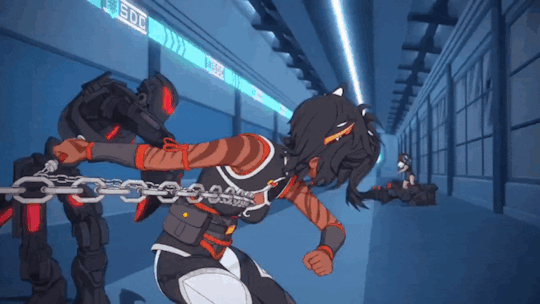
Sienna obviously alludes to the tiger Shere Khan. She is a tiger faunus, who despises humans, just like Kipling's character. Moreover, her personality is on some level similar to Shere Khan's:
Sienna: I'm starting to doubt either of you fully comprehend what it is that I want. I want humanity to fear the Faunus, to know that we demand respect! I do not want to start a war with the humans that we cannot win!
Here, Sienna basically says she is not gonna start a fight she is gonna lose. This personality trait is confirmed by her semblance Grudge, which lets her grow stronger and faster when facing a weakened enemy. In short, she symbolically grows more aggressive and powerful against an opponent already on their last leg. This is similar to the tiger, as Shere Khan is famous for fighting mostly when he has the advantage.
What's important is that Ghira and Sienna's rivalry mirrors Bagheera/Akela and Shere Khan's. On the one hand Bagheera and Shere Khan are opposites ideologically. The panther respects humans, while the tiger hates them. On the other hand Akela and Shere Khan are political enemies, as they fight over the control of the wolf pack. Similarly, Ghira and Sienna embody opposite ideals and disagree on how to lead the White Fang.
In the end, the 2 characters' stories mirror those of their literary counter-parts.
Bagheera and Akela remain close to Mowgli, who keeps following their teachings. In particular, Akela loses control over the wolves, but he is saved by Mowgli who grows into a leader of his own.
Shere Khan briefly becomes the leader of the wolves, but is defeated twice. First politically, as Mowgli humiliates him in front of the wolves. Secondly physically, as he follows Mowgli to kill him, but ends up dead instead.
Likewise, Ghira gives up the leadership of the White Fang and retires. Still, he gets his daughter back and Blake becomes his political heir. Sienna instead influences the younger generation (Adam, Blake and Ilia), but is killed by Adam, who steps up as her ideological successor. Her death even combines both of Shere Khan's defeats:
Mowgli wins against the tiger by using fire, which the people of the jungle call red flower. Adam is the red flower (cursed red rose) who steals Sienna's support and organizes a coup (political death).
Mowgli kills the tiger by having the oxens run over him. Adam is the bull who stomps Sienna to death and kills her (physical death).
Ghira and Sienna leave behind two opposite political legacies, which are picked up by respectively Blake and Adam. So, the panther and tiger's ideological conflict goes on with the cat and the bull's antagonism.
BLAKE VS ADAM
Blake and Adam's conflict ties with The Jungle Book in 3 different ways:
Blake is Mowgli and Adam is Shere Khan - They fight for survival

In The Jungle Book 2016 movie Shere Khan is blind from one eye. The tiger is said to have lost it to humans and their red flower (fire). This is very similar to Adam's backstory. He was abused by humans and lost an eye to them. As a result, he gets corrupted by a metaphorical red flower (the cursed rose), which turns him into a selfish beast. Both the tiger and Adam are blinded by their hate and are defeated because of this.
Not only that, but Adam's personality is really similar to Kipling's Shere Khan (way more than Sienna's). Both are bullies, which turn a wound (Shere Khan's injured leg and Adam's lost eye) into an excuse to hurt others. Both are short sighted and short lived leaders. Shere Khan's status as chief ends immediately because of Mowgli and Adam's command is lost because of Blake. Finally, both follow Mowgli and Blake to murder them, but are killed instead. The way Adam dies even alludes to the 2 ways Mowgli wins against the tiger:
Adam loses because of his anger blinding him, just like a crazy bull. Mowgli uses the oxens' fear and anger to lead them over Shere Khan.
Adam is defeated by Blake and Yang's combined efforts. In particular, Yang is the fire that helps Blake win against her personal Shere Khan.
So, Adam and Blake's conflict really mirrors Shere Khan and Mowgli's, with Blake gaining two big victories against the tiger/bull. The first political (at Haven) and the second physical (at Argus).
Blake is Bagheera and Adam is Shere Khan - They fight over Mowgli
Blake and Adam inherit Ghira and Sienna's philosophies. Not only that, but they make these ideals more radical:
Ghira: She's learned a lesson that evaded me until I was much older: That there is strength in forgiveness.
Adam: We're better than humans. We have everything humans have and more. Humans shouldn't just fear the Faunus, they should serve the Faunus.
Ghira admits that Blake has already surpassed him in terms of inner strength, idealism and ability to forgive. Adam claims that Sienna is not extreme enough in her grudge against humans. Humans should not only fear the faunus, but also serve them.
Blake mobilitates the faunus for peace and love, while Adam invites them to war and hate. So, what was a political disagreement for Ghira and Sienna becomes a full out fight for Blake and Adam. Once again, we have a black cat and a red beast fighting over how to deal with humanity. Symbolically this conflict becomes about one simple soul:
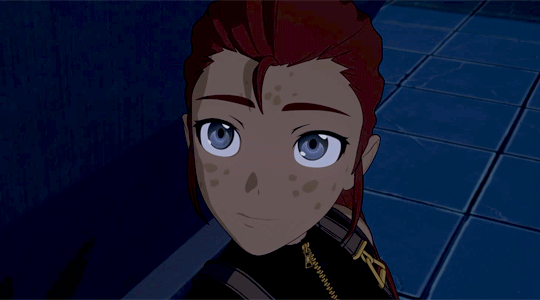
Ilia can be seen as based on Mowgli, especially when it comes to her backstory and chameleon traits:
Blake: Why… why'd you join the White Fang? Ilia: Same reason as you. Blake: But… Ilia: But why fight when I pass for Human?
As Blake highlights, Ilia could pass up as human. In a sense, she is "hairless", just like Mowgli who is jokingly called by his friends "little frog". So, Ilia could easily blend in and this is at the center of her background:
Ilia: We lived in Mantle with the other Faunus working the mines. But my parents wanted something better for me. They managed to enroll me in an Atlas prep school. Imagine that - a little Faunus girl from Mantle going to the city of dreams. I felt like a princess. But I had to follow a set of rules. No bringing friends home, no talking about my parents…and absolutely, under no circumstances, was I allowed to change colors. No one could know I was a Faunus.
Ilia tries to integrate in Atlas (a human village) and perfectly follows her parents' rules (the Law of the Jungle). Still, things eventually do not work out and Ilia leaves Atlas disgusted and heartbroken:
Ilia: I lost control. Every inch of me turned blue as I wept. And suddenly all the girls that I'd laughed and played with… were scared of me. Blake: I'm sorry. Ilia: Don't be. I broke their teeth.
This story parallels and partly inverts Mowgli's. Just like the human cub, she finds herself adopted by people different from her. She feels part of the pack, but a sudden tragedy makes her realize this isn't the case. She is betrayed and leaves to go back to her people. She joins the White Fang, but finds a violent and controlling reality.
So, Ilia herself is the Mowgli Blake and Adam are symbolically fighting for. After all, she is a foil of both.
Just like Blake, Ilia is a young girl who finds herself in a toxic cult. She is confused and manipulated and can't really build up the strength to leave. Her arc also partly inverts Blake's. She starts by hiding her faunus heritage and goes on by joining a violent movement. Blake is initially a terrorist and later on covers her faunus trait. They conceal parts of themselves, both in the White Fang and among humans. Their goal is to be accepted for who they are.
Just like Adam, she is a faunus exploited by Atlas, who grows resentful towards humans because of the Kingdom's racism. They are also parallels when it comes to Blake, as they both fall in love with her. Despite their past feelings, they are also ready to hurt her. In particular, Adam comes up with the plan to kill Blake's family and Ilia takes part in it out of desperation.
In short, Ilia walks a fine line between Blake and Adam and can either turn a new leaf or spiral more:
Blake: That's what worries me about Ilia. She's not like Adam, not yet at least, but I don't know how long that will last.
Luckily, a happy ending awaits our chameleon Mowgli. The conflict between Bagheera and Shere Khan over her destiny is won by the panther and Ilia is happily adopted by the wolf pack:
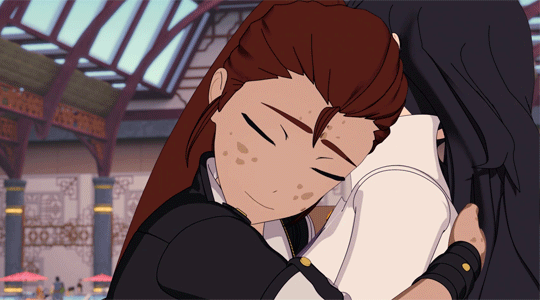
She finds a sister in Blake and new parents in the Belladonnas. This fits Mowgli's story. Even if he buries his wolf parents in their cave (just like Ilia's die in a cave in), he finds happiness and an adoptive mother in Messua (and Ilia joins Ghira and Kali).
Blake and Adam are two Mowglis - They fight over the Jungle
Mowgli is a character with a duality to him. On the one hand he is honorable, loyal to his people and he refuses to kill humans, even if they treat him poorly. On the other hand he is proud, angers easily and he destroys a village for revenge. He is both respected and feared by his peers:
Blake: We were being treated like equals. But not out of respect… out of fear.
Blake and Adam embody these 2 different sides of Mowgli.
Blake is the Mowgli who fights for her family, her wolf one (Ghira and Kali) and her human one (team RWBY). She is mistreated by both the wolf pack (White Fang) and the human village (society). Still, she doesn't give up on either:
Blake: We're not going to destroy the White Fang. We're going to take it back.
Yang: But you never gave up on them (people). Even when they hurt you. You never give up. You know what matters to you.
Adam is the Mowgli out for revenge, who doesn't forgive either the faunus (the wolves) nor the humans (the villagers). He wants to be on top and relishes his enemies' pain.
Allusion-wise, this difference plays out in the aftermath of Sienna's death, which parallels that of Shere Khan's final defeat. As a matter of fact the tiger's demise marks the beginning of Mowgli's conflict with the humans. This happens because an arrogant hunter wants to take credit for the kill, so he convinces the other villagers Mowgli is a demon.
Well, Adam comes up with a similar lie:
Adam: Give our former leader a proper burial. All who were here tonight will claim that Sienna was murdered by a human Huntsman.
He uses Sienna's death to spread hate towards the humans and the Huntsmen. Not only that, but he manipulates the people of Menagerie into believing the Belladonnas are liars and enemies of the faunus:
Ilia: The Belladonnas are the worse kind of Faunus! They want us to work with the same people that are trying to hold us down! If you truly, truly want to help your people… now is the time to support Adam, not the Belladonnas!
The result of Adam's scheme, though, is that Blake unites the Menagerie faunus (the jungle) by her side.
At the same time, Adam takes up Sienna's mantle as High Leader by killing her. This is how Mowgli gains the other animals' respect after showing them the tiger's skin. By this point, the wolf boy has the jungle antagonize the humans, just like Adam plans a full out attack on Haven.
Both Blake and Adam become the leaders of the jungle and have it advance against their enemy, like Mowgli does. It is just that Blake becomes an inspiration out of love and trust, while Adam grows into a king through hate and violence. So, their collision becomes a clash between 2 opposite ideas of jungle (faunus).
TWO RED FLOWERS
Mowgli's duality is nothing, but humanity's double nature. He can be both a god and a demon. Similarly, people can be both heroes and monsters. This juxtaposition is well conveyed through the red flower aka fire.
On the one hand the red flower gives light and warmth:

Blake uses fire to symbolically draw Ilia into the light and force her to show her "true colors".
On the other hand fire destroys and burns:
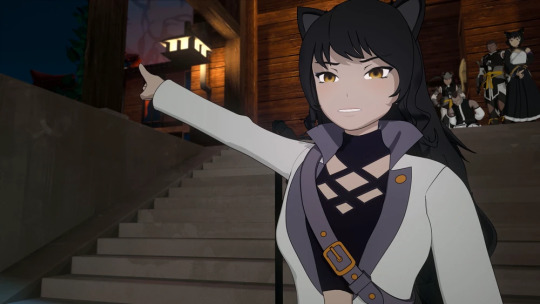
Blake: Humans didn't do this. We did this: Faunus. We did this to ourselves.
Blake chooses light and a loving rose who is hopeful and idealistic:

Adam chooses destruction and a spiteful rose who consumes and burns:
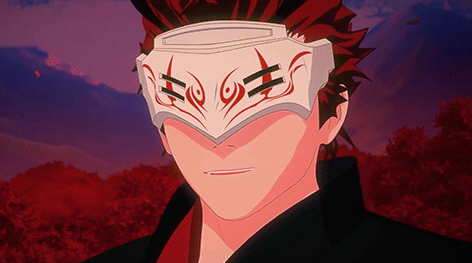
Blake and Adam's different ideologies are well conveyed through their two war songs:
This time The ways of the past we'll get over We'll climb Enlighten a new state of mind And now I'll stand with you shoulder to shoulder Out of the ashes a new flame ignite Rise up from shadows and into the light We'll stand undivided Our futures aligned A new brotherhood This time
I'm here I'm your savior I'll be lionized I am the path to reclamation This world will have no peace til our dream's realized No mercy no compassion our fate's justified Time to turn the table on who's tyrannized
Blake sings together with others. This is a recurring motif with her musical themes. After all, she sings alongside Adam, Sun, Ghira and Yang. When it comes to "This Time", though, the use of "We" shows how much Blake's community means to her. She thinks of the faunus as her brothers and sisters ("A new brotherhood") and considers them as equals ("I'll stand with you shoulder to shoulder"). She sees her pack as a political movement made of free people, ready to fight as one.
Adam sings to others instead. He presents himself as a savior and a hero, some kind of chosen one. By doing so he shows he doesn't consider the people he is supposed to fight for as equals. Everyone is below him. This feeling gets clearly exasperated with time.
He starts his own short with this:
Adam: Now - it's time we got what we deserved.
And he ends it this way:
Adam: It's time I got what I deserved.
He goes from "We" (community/brotherhood) to "I" (individual/savior).
Basically, Blake wants equality ("It's time to save our fate and walk beside the human race"), while Adam wants a new hierarchy ("Time to turn the table on who's tyrannized"):
Blake: I never wanted this! I wanted equality! I wanted peace! Adam: What you want is impossible!
Blake thinks true freedom is realized when everyone is free and equal. Adam instead believes freedom is simply imprisoning someone else.
These two mentalities tie with the idea of fighting, which is found in both Blake and Adam's rhetoric:
No way to avoid the warfare No way to escape this strife Hear now-listen to me This time retreat Spells our final defeat We must win our life
Lead them to salvation and regain our lives Behold your flaccid leaders Too weak to take the prize Replace them with a warrior It's time we mobilize
It is interesting because Blake and Ghira are seen as pacifists and even criticized for this. Adam and Sienna instead present themselves as fighters who are not scared to spill blood. And yet, the Belladonnas are the ones asking their people to fight:
Ghira: To do this, I think the answer is clear, we must go to Haven and protect it at all costs!
Adam and the White Fang instead claim they will fight in the faunus' place:
Ilia: He (Adam) will bring about the future that you deserve. And if you are unwilling to fight, know that the White Fang will do it for you!
This is addressed in Blake's speech in Menagerie:
Blake: So why are we letting Adam do it for us?! By doing nothing and staying silent, we let others speak and act in our place. And if we're not proud of the choices they make, then we have no one to blame but ourselves. This is the message that Adam Taurus will bring to the world if no one stops him. But we can stop him! (...) I understand that to ask you to leave your homes and protect Haven Academy is asking you to put your lives at risk. But that's what's at stake.
To give up one's agency to another is the opposite of freedom. Blake wants her people to be active and to choose their destiny. Adam instead is happy with them being passive, so that he can choose in their stead. Blake inspires the faunus to take their lives in their own hands, while Adam convinces them they do not really need to. Blake truly wants people to be free. Adam instead wants people to be his subjects.
These are Blake and Adam's opposite political manifestos, which are conveyed through two different flags.
Blake's flag mixes the old White Fang's symbol with a new yellow one, as there is continuity between Blake's movement and Ghira's. At the same time, white and especially yellow are two colors linked to light:
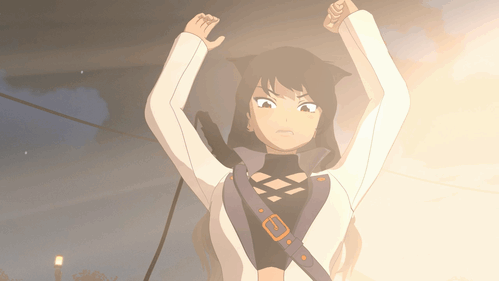
Blake symbolically brings Adam into the light and shows his real self to the world.
Adam's flag uses a red symbol, which appears more threatening. Red is linked to blood, as his movement is way more blood-thirsty than the original White Fang:
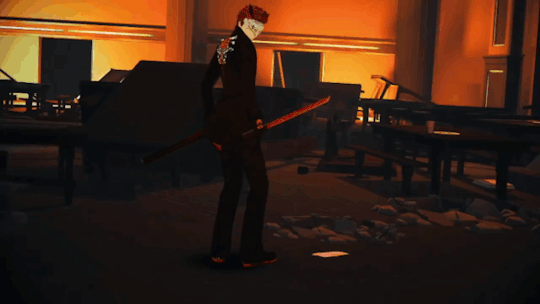
Adam at Beacon is surrounded by destruction and red flames.
So, Blake and Adam's emblems represent the two different sides of the "red flower". One is a flame which burns gold and sheds light. The other is a flame which burns red and spills blood.
THE RED DOGS
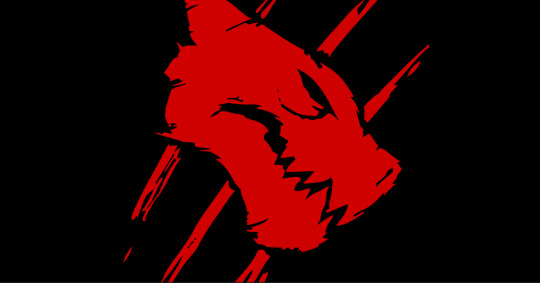
The White Fang's red symbol brings to mind the Red Dogs. They are an aggressive group of dogs, which antagonize Mowgli's wolf pack in the second part of the story. This allusion is hinted at also by the Albain Brothers:
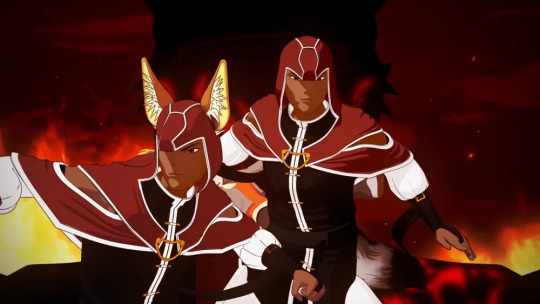
They are literally two red dogs and serve as Adam's most trusted allies.
In general, the short story Red Dogs describes Blake's conflict with Adam very well.
First of all, the war with the Red Dogs is in the second part of Mowgli's story and it marks a reconciliation between Mowgli and the wolf pack. Similarly, Blake and Adam's fight happens after Sienna's death and it ends with Blake mending her relationship with the faunus liberation movement.
Secondly, this story just perfectly fits Blake's plot-wise.
It opens with the arrival of a stranger. He is a lonely wolf (Won-Tolla), who has lost his family and a limb to the Red Dogs. He wants to fight the dogs for revenge, but advises the wolves to leave.
He loosely resembles a certain firecracker:
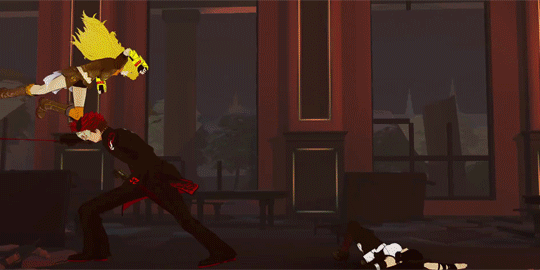
I am the golden one Who burns just like the sun Next time we meet is your disaster I'll bring the punishment Your song will be lament Revenge, my happy ever after
Luckily, Yang doesn't lose her loved ones to Adam (at least not permanently), but she still gets her arm cut and swears revenge.
Mowgli refuses to leave and urges the pack to fight. He says he is no part of the pack anymore, but that he will join the wolves for this battle. This is similar to Blake's speech to the faunus. She doesn't have to help the humans. Still, she is willing to and invites the other faunus to do the same. They shouldn't run away, but fight with pride:
Now is the time you must fight for your lives The battle is on you're already inside Don't turn back now There's nowhere to hide Nowhere to build a new world Nowhere to start anew Here. Now. Is all that we've got Ready or not There's a war to be fought Only one way through
Still, the real similarities between Kipling's story and Blake's struggle are found in her final confrontation with Adam:
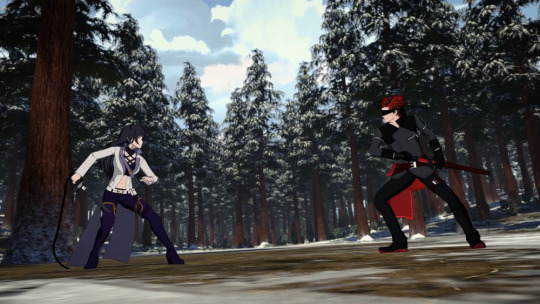
Mowgli defeats the Red Dogs thanks to a well-thought plan, while Blake wins against Adam thanks to her bravery. Still, the two fights follow similar patterns.
Both Mowgli and Blake face their opponents in a forest and lead them to a rocky area above a river:
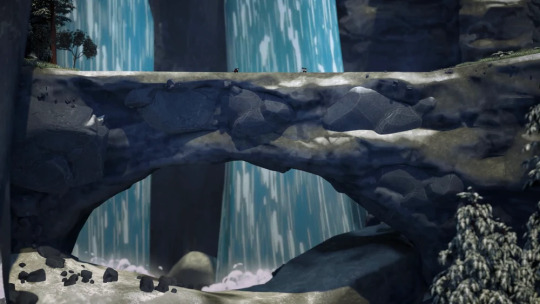
In The Jungle Book, this is where the murderous bees have their nest. Mowgli runs quickly past them and jumps in the river, where he is helped by Kaa. The dogs are instead killed by the insects and fall in the stream, which leads the survivors to the wolf pack, ready to finish them off.
In RWBY, this bridge over a river is where the bees (Blake + Yang) kill Adam:

Symbolically, bumblebee even falls into the water to show that it is in fact the bees' river.
There are also other similarities. For example, Mowgli cuts the leader of the dogs' tail and uses it to provoke the group and bait them towards the bees. Blake and Yang instead try to take away Adam's sword:
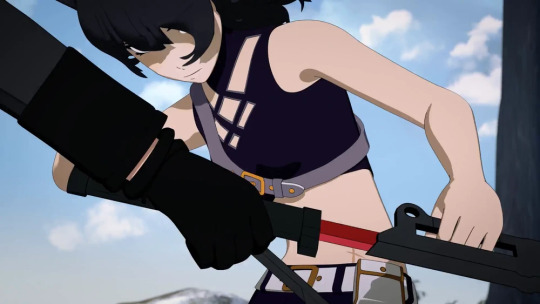
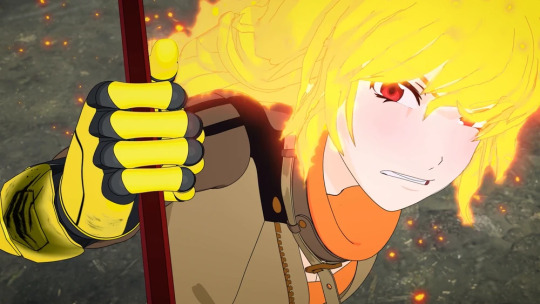
And Yang uses it to lead Adam to where Blake ambushes him.
Finally, Mowgli and the Won-Tolla kill the head of the pack together:
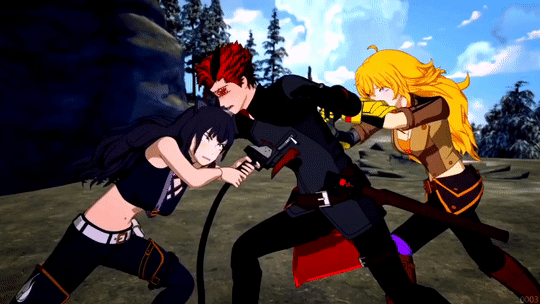
Sure, Won-Tolla dies, while Yang survives. Still, in both situations the emphasis is on the necessity to even the score:
You may have taken the lead but I'll even the score You won the battle you won't win the war Not now and Nevermore
Both the wolf and our golden beauty are able to pay their "blood debt" and find peace.
Kipling's story ends with Akela's death. The wolf is one of Mowgli's parental figures and his passing marks the end of the book and the beginning of Mowgli's new life. After all, he is the one who advises the boy to go back to the humans.
Similarly, Adam's death represents a new beginning for Blake, as it grants her freedom.
FREEDOM IS FINALLY HERE
Nevermore Will I be afraid Nor will I run away It's behind me Freedom is finally here
Throughout her arc, Blake grows close to several faunus, who offer different takes on freedom. It is thanks to them that our cat girl finds "her own liberation".
Initially, Blake wishes for everyone to be free and equal and yet she herself is a prisoner of her own shadows:
Blake: I joined the Academy because I knew that Huntsmen and Huntresses were regarded as the most noble warriors in the world. Always fighting for good. But I never really thought past that. When I leave the Academy, what will I - how can I undo so many years of hate?
She feels obligated to solve all of the faunus' problems on her own. Basically, she is ready to free others at the cost of chaining herself.
Adam is her opposite. He wants no limitations nor boundaries and is willing to enslave others to succeed. He starts with Blake herself:
Adam: What, do you want me to just abandon our cause? Like your parents? Blake: No! I'm not saying that! I… I don't know.
He traps her in an abusive relationship with no way out.
To escape Blake needs the help of a free spirit:
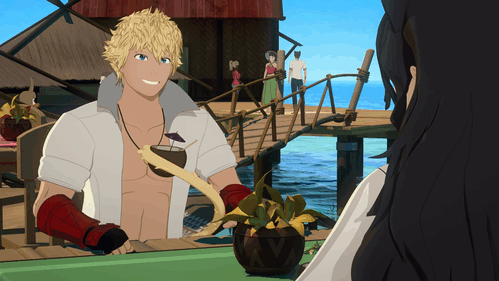
Sun alludes to the bandar-log (monkey people). They don't follow any rules, they often change their mind and they're unpredictable. This description fits our Monkey Boy to a tee. Sun is air-headed and does what he wants with no regards for rules. He is a stowaway who runs from the police and happily steals some food for him and Blake. This is similar to how Kipling's monkeys act.
It is just that in The Jungle Book these characters are framed as negative. They kidnap Mowgli and are eaten by Kaa the python. In RWBY instead, Sun is one of Blake's most trusted allies and the two of them defeat a giant snake together:
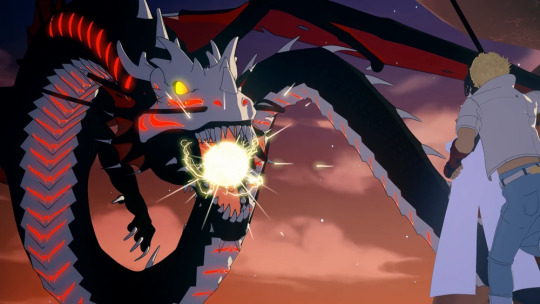
More importantly, Sun teaches Blake about freedom:
You're free to do the things you want But listen, so am I I've made my choice And now I'm making mine
Blake is free to make her own choices, but her friends are free to make theirs. She is free to leave, but Sun is free to follow her and to help her.
This mentality eventually gets through to Blake and even helps her save Ilia:
Blake: I'm going to try and help her the way you helped me. You showed me that sometimes you need to be there for a friend even when they don't want you to be. I was drowning in guilt and fear, I tried to push you away, but you didn't give up on me. And I can't give up on Ilia. It's about time I saved my friends for once.
Ilia is really the opposite of Sun. If Sun is free and believes everyone's free, then Ilia is trapped and steals others' freedom away:
Ilia says to a tied up Blake: We all have to make sacrifices for the greater good, no matter how much it hurts. (...) I was always jealous of the way you looked at him (Adam). I wanted you to look at me that way. But we can't always get what we want!
She represents the part of Blake who is a prisoner of the past. This is why Blake eventually frees her in two different ways:
Ilia: I still don't feel like I deserve the freedom you and your family granted me.
Ilia is given both physical freedom (she isn't arrested) and mental freedom (she joins a new liberation movement).
Going back to Sun, he helps Blake free herself and others. This may be why she decides to make the new symbol of the White Fang yellow (Sun's color):
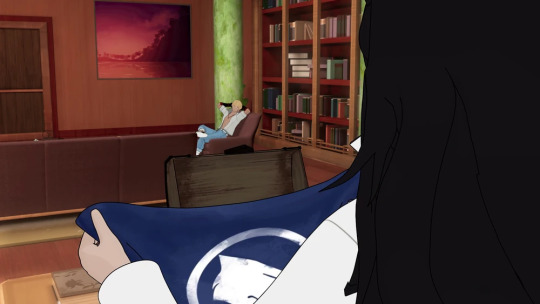

Still, Sun's mentality is not perfect:
And his teammates already had plenty to hold over his head. He wondered when they were going to get over it. So what if Sun had gone off to do his own thing for a while? That was just the kind of guy he was; he had to go where he was needed. The gang had been back together for weeks now, but it still hadn’t blown over. Scarlet was acting bossier than usual, and Sage had been giving Sun the silent treatment. At least Neptune always had his back, but something seemed to be off with him, too, no matter how much he insisted that everything was fine.
Sun's refusal to apply any kind of obligations to both himself and others is healing for Blake, but it doesn't work for long term relationships. If you share a bond with someone, you have responsibilities toward them, like they do toward you. Sun has instead the tendency to run away from these kinds of duties. He is incredibly generous with Blake, but he also leaves his team with no warning.
His relationship with Blake is summarized by this line:
Blake: Be careful. Sun: No promises.
Sun isn't gonna ask Blake to make any promises. She can come and go as she pleases, but Sun himself can and will do the same:
Sun: I go where I'm needed!
This is very similar to how the bandar-log act. They do not follow the Law of the Jungle, which means they are not bounded by it. Still, this also means they can't build strong relationships with the other animals. Mowgli and his friends instead do follow the Law, which makes them truly free.
Sun is a great friend to Blake, but our cat girl's freedom isn't found in the absence of obligations. It lies instead in the choice to share a vow with a person ready to reciprocate it.
I made a vow I'm not alone Not dying now we're protecting our own
BY THE BULL THAT BOUGHT ME
Mowgli's story starts and ends with a bull. Bagheera offers the wolf pack a bull for them to accept Mowgli. This means the boy is forever in debt until another bull is sacrificed. This is why when Mowgli chooses to live with humans, Bagheera kills another bull. The panther is paying the debt, so that his friend can leave the jungle and be free.
Blake's arc starts and ends with Adam, a bull faunus. She is introduced at Adam's side and with time he becomes the main obstacle between Blake and her new life. In particular, Adam reproaches Blake for breaking her promise to him:
Adam: You know, she made a promise to me once. That she'd always be at my side. Heh, and look how well she's kept it.
Like Mowgli, Blake has still a debt to pay, which is addressed and solved in Bumbleby's fight against Adam:
Yang: Did she make that promise to you? Or to the person you were pretending to be?
Yang doesn't dismiss Blake's vow to Adam, but points out it isn't valid because Adam tricked Blake and did not reciprocate her promise. In other words, the relationship between Adam and Blake is unbalanced, which makes it unhealthy.
Blake and Yang's bond is different:
Blake: She's not protecting me, Adam. And I'm not protecting her. We're protecting each other.
It is a pact of mutual trust and love.
The metaphor is very clear. Blake's promise to Adam represents their romantic bond, which needs to be cut, so that our cat girl can start a new relationship with Yang. Bumbleby vs Adam being a chemical wedding just makes this symbolism stronger.
Blake disowns her vow with Adam and takes a new one with Yang:
Blake: I have people who actually care about me, and I promised I'd never leave them again. So I'm not dying now.
Just like Mowgli pays his debt to the jungle with the death of a bull, Blake is fred by her previous vow thanks to Adam's death. In this way, Mowgli can join the other humans in spring and Blake can start her new love story with Yang in Mistral (the Kingdom of spring):
Blake: I… I am not going to break my promise, I swear.
After Adam's fall, Blake affirms her promise to Yang once again. This is Blake's wedding vows to her golden beauty.
The end result is that Blake finds freedom and a new life full of gold and light by integrating with Yang (humanity):
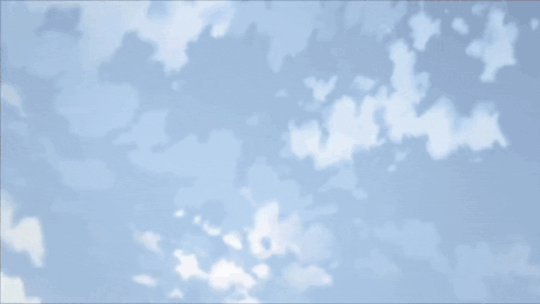
At the same time, she is and will always be a faunus (a child of the jungle) and is not going to betray the spirit and ideals of her people:
Blake: A simple life wouldn’t be my life! My family, my friends, my culture. I belong to them, just as much as they belong to me. To give that all away wouldn’t be simplicity, it would be betrayal.
Just like Mowgli isn't forgetting the Law of the Jungle.
In conclusion, Blake's Jungle Book is a tale of freedom, both political and personal. Blake realizes she can't be free by imprisoning others, but also that she herself needs to be unchained to truly help people. She decides her own path as a bridge between humans and faunus and this choice itself is freedom.
148 notes
·
View notes
Text
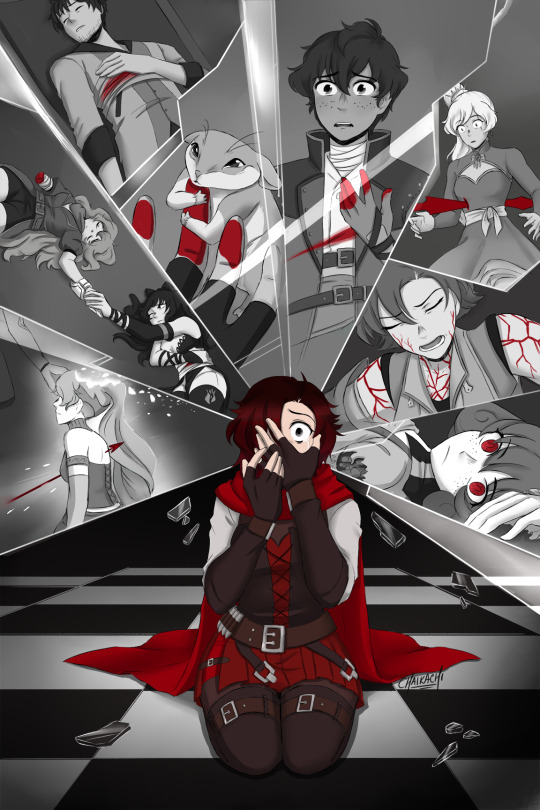
there's a million ways to spill blood on the court...
2K notes
·
View notes
Text
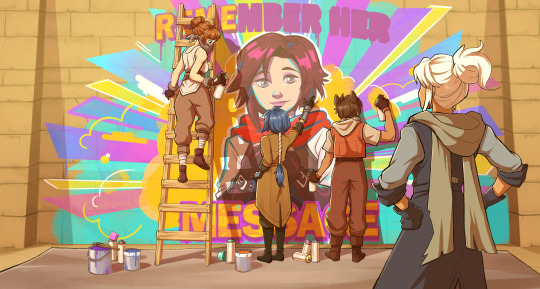
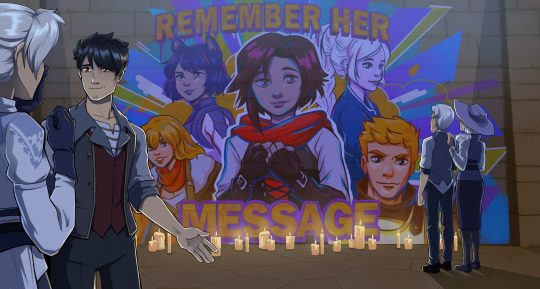
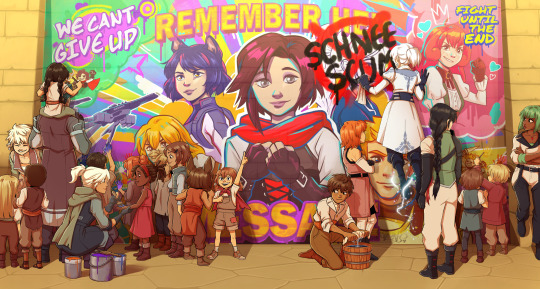

"...because you did start something."
9K notes
·
View notes
Text
RWBY Volume 9 "Epilogue" Thoughts
youtube
So, here it comes an extra volume 9 animatic "epilogue" and I wanted to share some thoughts and a brief analysis.
General Thoughts
I really really liked it!
I am happy the Atlas refugees are having problems to adapt and that the Schnee Family has to face their privilege head on
It not being included in volume 9 works better for me because its contents can easily be re-arranged at the beginning of volume 10. In my opinion the story flows better this way (only my 2 cents though)
I am neutral to Raven's appearance.
On the one hand I hope the conflict between her and Yang is not solved too easily (I also think Yang hiding the Spring Maiden identity should be addressed). On the other hand her appearing at the beginning of the new story arc solves several things. She can make progress early on, so that the focus can then be given to other characters. Moreover, she can reveal what happened between her and Summer. If this mystery is solved, then there is more time to focus on Summer's return (either as a Grimm, a human or in some kind of symbolic way). In short, it can all lead to very thight writing, so I approve.
As for people wondering if the story was changed since RWBYJ leave the Ever After on their own... we can't say, but personally I never felt Raven saving them from the Ever After really worked thematically and I don't think it is what the epilogue implies. After all, before the video they say they deleted some scenes which tie with volume 10 plot. I think RWBYJ's meeting with Raven is one of these. Nonetheless, I am happy if we get our "Spring leading to Summer" symbolism. (Which really works on multiple levels doesn't it?)
In any case, I think Raven simply senses Yang is back and goes to meet her. Then she leads them all to Qrow. This in itself is a significant improvement for her. Still, it makes sense if Raven thought Yang was really dead. It can work as a final callout and a consequence of her actions. Yang outright asks Raven to choose between herself and her daughter and Raven makes the selfish choice. As a result, Yang dies. It is no surprise then that Yang coming back is seen by Raven as a final chance to do the right thing.
Speaking of people dealing with grief and loss, here we come to the heart of the new content and the focus of this short analysis.
Winter and Qrow - Grief
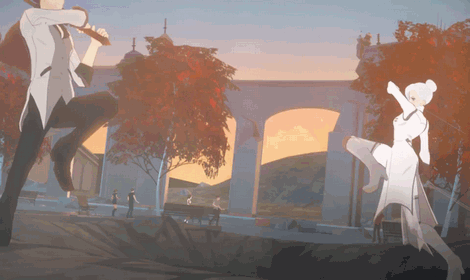
So, the heart of the video is really the foiling between Winter and Qrow. This is interesting in itself because these 2 characters are tied together since their first appearance in volume 3:
Qrow is Ruby's mentor
Winter is Weiss's mentor
Both girls look up to them and try to imitate them. Still, this changes with time as both Ruby and Weiss grow until they are able to inspire Qrow and Winter back.
Here, we see exactly this, as both Winter and Qrow talk to the two girls in their minds (Qrow is talking to all of them, but the foiling is between Weiss and Ruby and thematically the focus is on Ruby anyway). Still, their thoughts are complete opposites.
On the one hand Winter focuses only on the problems and sees no beauty at all.
Winter: "But no amount of determination or hard work will change where we find ourselves now. What do you do when there is no hope left?"
On the other hand Qrow is conscious things are bad, but is full of hope.
Qrow: Call me crazy, but I am actually feeling a little optimistic about things. I figure... Don't get me wrong...It's bad. In fact it'd never been worse. And yet, you can still see the goodness in all things. Acts of kindness, people trying to atone for past wrongs.
This ties to their 2 different ways of mourning.
Winter: "You and your friends did all you could to save the world. You would be so disappointed in us. Maybe it's for the best you don't have to see this Weiss" > She is looking at the memorial monument, where it's written "Don't come back"
Qrow: "Things may be bad, but my biggest regret is that none of you are here to see the good that you started because you did start something." > He cries while looking at a picture of Ruby that says "Remember her message"
Winter thinks it is best that Weiss isn't there to see that everything was useless. Qrow instead wishes the kids were there to see that the world is changing. These behaviours aren't limited to Winter and Qrow's feelings over the protagonists, but they fit their reaction to another important loss they both faced:
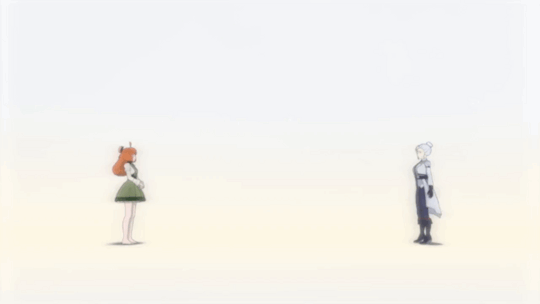
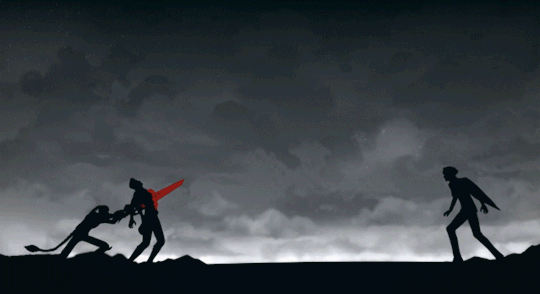
Penny and Clover's deaths have similar roles in Winter and Qrow's stories, as they are supposed to integrate with their lost loved ones. This is conveyed also through their respective powers:
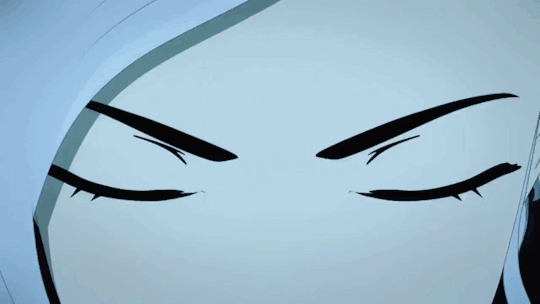
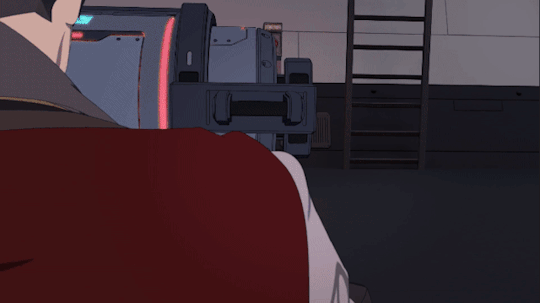
Winter inherits the Winter Maiden's power by Penny and Qrow's semblance evolves to become similar to Clover's. This shows Qrow has successfully integrated Clover's mentality into his own:
Qrow: Like an oasis in a desert, it's all a matter of perspective. You see, an old friend taught me that.
The same can't be said about Winter:
Penny: "I won't be gone, I'll be part of you."
Winter: "Because of me, Penny is gone. Forever."
As Penny herself states in her final goodbye, she isn't really "gone", as her legacy lives up in Winter. This means Winter should honor her will and adopt Penny's optimistic mindset. Still, Winter is doing the opposite. This is why she feels Penny is really gone forever.
In other words, Winter has understood rationally what a real Maiden should be like:
Winter: No, Penny. You were always the real Maiden at heart.
However, she still doesn't feel it in her heart. This is why probably she needs Weiss to finish her arc:
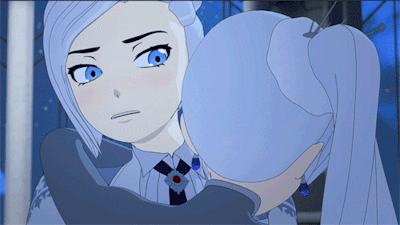
After all, Weiss is supposed to be Winter's second Gerda, which takes out the final cursed glass fragment from Winter's heart.
Qrow is instead close to the end of his arc, in my opinion. As a matter of fact he has already been inspired by Ruby:
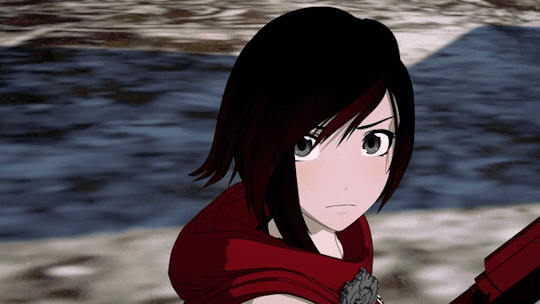
I think he only needs a top off, which will probably come with a final showdown with Tyrian, which will not be about revenge, but rather to save someone (probably Mercury).
What's important is that these 2 characters explore the theme of grief in opposite ways.
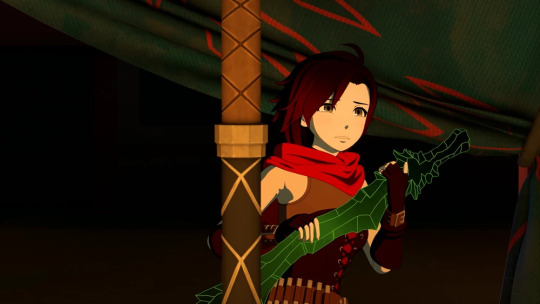
Ruby: I… I thought this was lost forever. How’d you have it? Blacksmith: Nothing. No one is ever truly lost.
Qrow understands the meaning of the Blacksmith's words, whereas Winter doesn't. The Blacksmith conveys to Ruby that all the people she lost are still parts of her. This is why she keeps finding Penny's sword over and over. It is because the hope Ruby saw in Penny is really just a part of Ruby herself:
Jinxy: Enough hope to fill this jar.
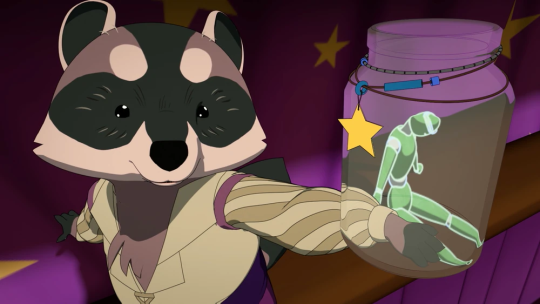
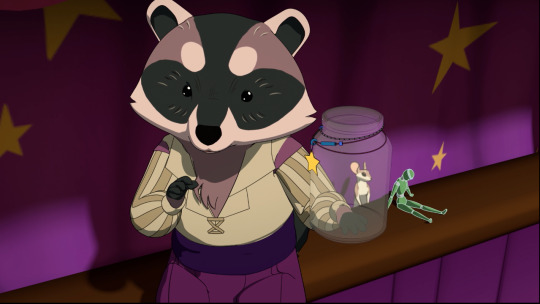
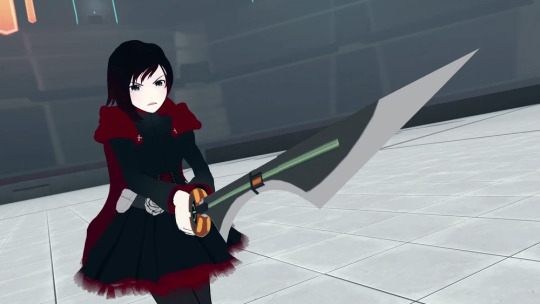
Ruby fights a Nevermore (grief) by using Penny's sword (hope).
Similarly, Qrow's sense of belonging and his wish to do good don't go away with Clover's death. If anything they are parts of Qrow that Clover made emerge. Thanks to the Lucky Fisherman, Qrow has now the right framework to show them to the world.
Winter too has in herself the heart to be a Maiden like Penny. She too has one of Penny's swords inside. She is just not looking at it out of self-hate and guilt. Luckily she is now surrounded by people who love her and they will hopefully help her take a closer look at the mirror.
144 notes
·
View notes
